
FEATURE IMAGE: Mary Pickford in 1927 in a publicity photograph for My Best Girl.
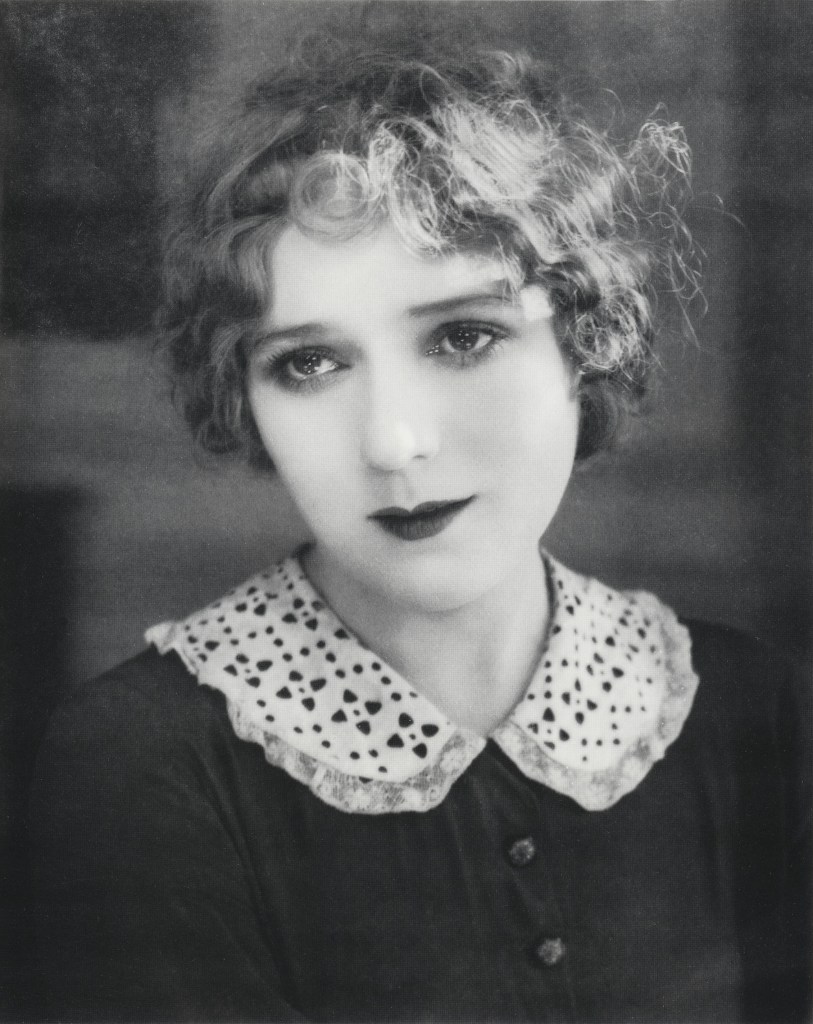





FEATURE IMAGE: Mary Pickford in 1927 in a publicity photograph for My Best Girl.




FEATURE image: “Alfred Hitchcock Presents” by twm1340 is licensed under CC BY-SA 2.0.
In I Confess, a 1953 film noir by Alfred Hitchcock (1899-1980) from Warner Bros., a Catholic priest, Fr. Logan (played by Montgomery Clift) hears the confession of a man who works in the rectory and just killed another man.
That killer had been dressed as a priest and, among other circumstances, points to Fr. Logan as the primary suspect for the police Inspector (Karl Malden) and prosecutor (Brian Aherne) for the murder of Villette, a prominent lawyer.
Because of the seal of confession – that is, when a person confesses his sins to a priest in Confession, the priest must maintain absolute secrecy about anything that the person confesses – Fr. Logan does not and cannot under any circumstances divulge the identity of the confessed killer though he (and the audience) knows it.
Even after Fr. Logan is arrested for the crime and put on trial for murder for it, the priest does not reveal the identity of the killer but only protests for his own innocence.
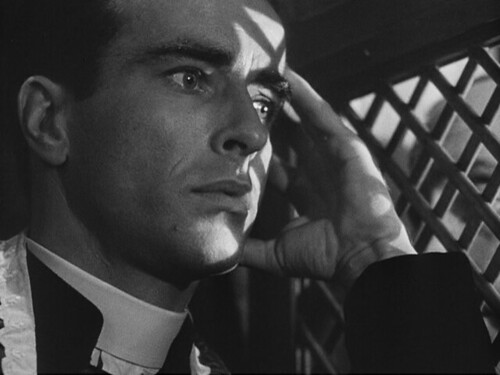
Hitchcock’s black-and-white film was shot by cinematographer Robert Burks (1909-1968) who would later shoot Hitchcock’s The Birds in 1964. It is edited by German-born Rudi Fehr (1911-1999) who in 1954 edited Hitchcock’s triumphant color feature, Dial M For Murder.
The story in I Confess was based on a 1902 play by Paul Anthelme Bourde (1851-1914), a French journalist who coined the term “decadent” for the avant-garde when he called indecipherable poets such as Symbolist Stéphane Mallarmé (1842-1898) one in the late 19th century.
The film follows the play which is about a killer who confesses to a priest knowing his crime cannot be betrayed. To complicate matters further, the killer blackmails the priest for a long-ago love affair he had with Ruth Grandfort (Anne Baxter), the wife of a leading citizen, and who still loves him. For the priest, the love affair is in the past though for Mrs. Grandfort it is not.

Clearly, for Hitchcock in I Confess, the priest in this situation is a highly curious figure. By the end of the film, it becomes clear that the seal of confession is a cross for the priest because of his priesthood – and though sins do not always deal with high crime – demonstrates the personified sacramental nature of self-sacrifice that is involved for the priest with each confession he hears. Throughout the film, Fr. Logan is a tragi-comic figure as he simply does not state the obvious of who the murderer is on behalf of social justice and his own innocence, but equally personifying the religious nature of living with and taking on another’s sin particularly when a person refuses their own responsibility and makes amends for it. In I Confess, the murderer has no intention of turning himself in and is content to let the priest under seal of confession take the rap in the courtroom of the law and public opinion.

Fr. Logan never impedes law enforcement’s investigation. He continually states his own innocence for which a jury of his peers is brought in to decide what to believe.
The sin of commission/omission – and in I Confess it is for and surrounds the gravity of murder – remains with the impenitent Otto Keller (O.E. Hasse) although his loving wife, Alma (Dolly Hass), to whom Keller confessed the crime outside confession’s seal, cannot abide by his secret.
If, despite the seal of confession, crimes can be revealed to government investigators then the sanctuary of the law of the cross is extricated to get at evil – which is not contradiction nor improvement to the confessional box (the priest may ask the penitent for a release from the sacramental seal to discuss the confession) but its obligatory public replacement. As there is often no transparency and plenty of state secrets in and around various government agencies, this becomes no less problematical than breaking down a Catholic (and Lutheran) church’s confessional door.

Although found “not guilty” for lack of evidence to convict, the presiding judge expresses his disbelief in Fr. Logan’s innocence. When Fr. Logan exits the court building, he is followed and faced by a hostile crowd – “Preach us a sermon, Logan!” The prosecutor, as he watches the ugly scene from his office above, is forced to lament his actions: ”Do you think I enjoyed it?” he says, washing his hands. After Fr. Logan is crashed into a car window in the crowd, Alma, Keller’s wife, (her name means “soul”) rushes in towards the priest to tell what she knows – and which an accompanying police guard relates to the Inspector – “She said he was innocent.”

Considered Hitchcock’s once most Catholic of films, I Confess is a tight drama with a truly despicable villain, whose murderous rampages continue. The film is ahead of its time in terms of direction – presaging some of the camera angles, editing, pacing and themes of international crime and psychological dramas that would come to greater fruition in the decades ahead.



text & layout –



FEATURE Image: Marilyn Monroe, 1952 by Philippe Halsman for LIFE. “Marilyn Monroe – 1952 / fotografiada por Philippe Halsman para LIFE” by Antonio Marín Segovia is licensed under CC BY-NC-ND 2.0.
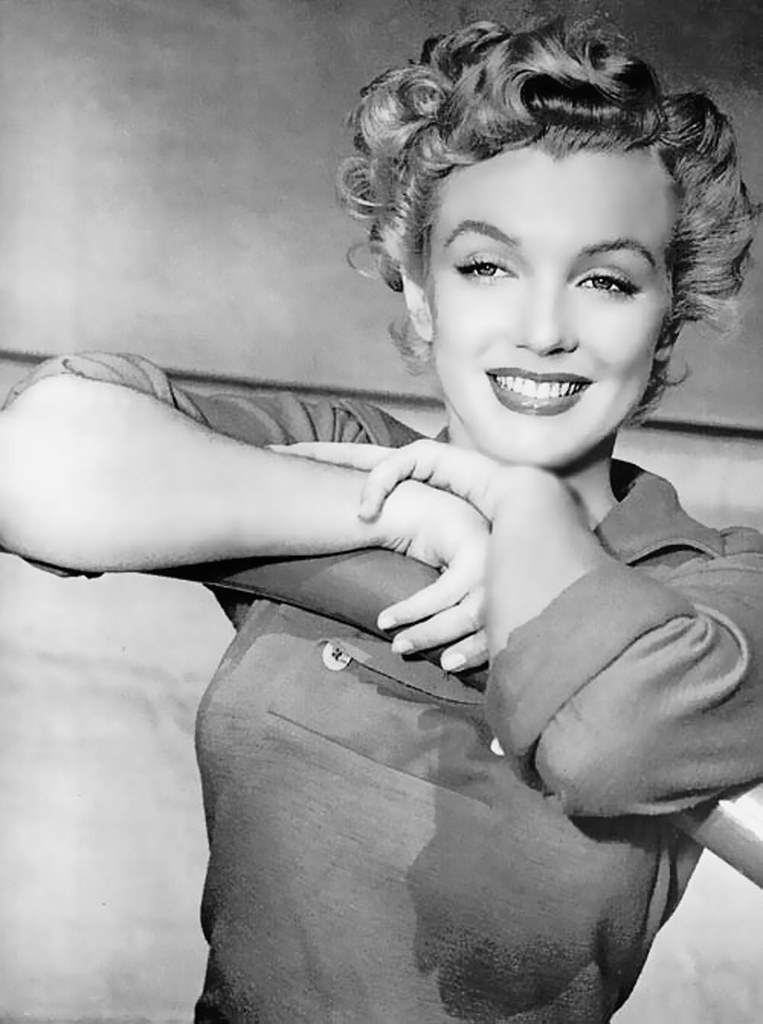
Marilyn Monroe (1926-1962) showed up in a bright pink dress for the release party of the song, Marilyn, in 1952. Though invited, she was the “surprise” stand-out guest who swooped in and out of the celebration fashionably in a wonky helicopter.
By the end of 1951 Marilyn Monroe had completed 13 films, mostly for 20th Century-Fox, and was on the cusp of major stardom.
In 1952, Marilyn made five additional movies – including Clash By Night (RKO) where she was identified as “the new blonde bombshell” by Kate Cameron in New York News. Marilyn also made in 1952 We’re Not Married for 20th Century-Fox where, according to Alton Cook of the New York World Telegram, “Marilyn supplies beauty. She is Hollywood’s foremost expert.” Also for Fox that year Marilyn made Monkey Business where Paul C. Beckley hints at the major transition that Marilyn was making to open the nation’s eyes to her rising star in 1952: “Not seen her before,” Beckley wrote in the New York Herald Tribune, “I now know what’s that about.” Marilyn rounded out 1952 with the Fox anthology film, O. Henry’s Full House where the critics stood up and noticed Marilyn’s “stunning proportions” (Archer Winston, New York Post).

In 1953, Marilyn Monroe’s star did not miss. Her next three films for Twentieth Century- Fox – Niagara (“seductive”), Gentlemen Prefer Blondes (“alluring”) and How to Marry a Millionaire (“magnificent proportions”) walked the walk to solidify her film acting career and her status as America’s enduringly iconic sex goddess or symbol.

Ray Anthony (b. 1922) is one of the few surviving members of the post-war period of Old Hollywood (TV producer Norman Lear is another) that came to an end arguably with Marilyn’s death in 1962. Four years older than Marilyn Monroe, Anthony turned 100 years old in California on January 20, 2022.
Most of that exciting generation born in 1922 – including Ava Gardner, Jason Robards, Betty White, Judy Garland, Doris Day, Cyd Charisse, Kim Hunter, Eleanor Parker, Veronica Lake, and others – are today gone.

Starting in the early 1950’s, Ray Anthony led a very popular ensemble that put out dance record after dance record. Many became instantly part of the culture – such as The Hokey Pokey and The Bunny Hop which seemed to make their musical appearance at nearly every wedding reception throughout the 1960’s and 1970’s.
With Anthony’s single Marilyn, the world’s most famous sex symbol was unattached though being courted by New York Yankees baseball great Joltin’ Joe DiMaggio. They married two years later in 1954.

In 1952 Marilyn Monroe was declared the “It Girl” by Hollywood gossip columnists. Though not a major star yet, Marilyn’s career was fluttering at the verge which made the Marilyn release party particularly exciting.

Ray Anthony adored beautiful and sexy Hollywood blondes. He married one in 1955. Anthony met Mamie Van Doren (b. 1931) in 1955, they had a son, and divorced in 1961. In 1956, Anthony appeared with another popular Hollywood blonde bombshell, Jayne Mansfield, in the musical comedy, The Girl Can’t Help It.
Surrounded by all this beauty and great music it is no wonder that Ray Anthony received his star on the Hollywood Walk of Fame in the midst of this period in 1957.







FEATURE image: Alice Terry by Melbourne Spurr, 1922. Public Domain.

Melbourne Spurr (1888-1964) arrived in Hollywood around 1917 at 28 years old. Spurr first worked at the studio of photographer Fred Hartsook (1876-1930) where he shot portraits of silent film stars.

After Spurr photographed Mary Pickford at the Hartsook studio, Pickford personally helped Spurr launch his career as a Hollywood portrait photographer. Regarding Mary Pickford, Spurr once said, “[she] always comes back to me, so I guess she thinks I’m not a bad photographer.”
By 1916 Mary Pickford (1892-1979) was a big star and had full authority over the films in which she appeared. She was earning a record-breaking $10,000 a week which was a staggering amount of money in the midteens (about $240,000 a week today).
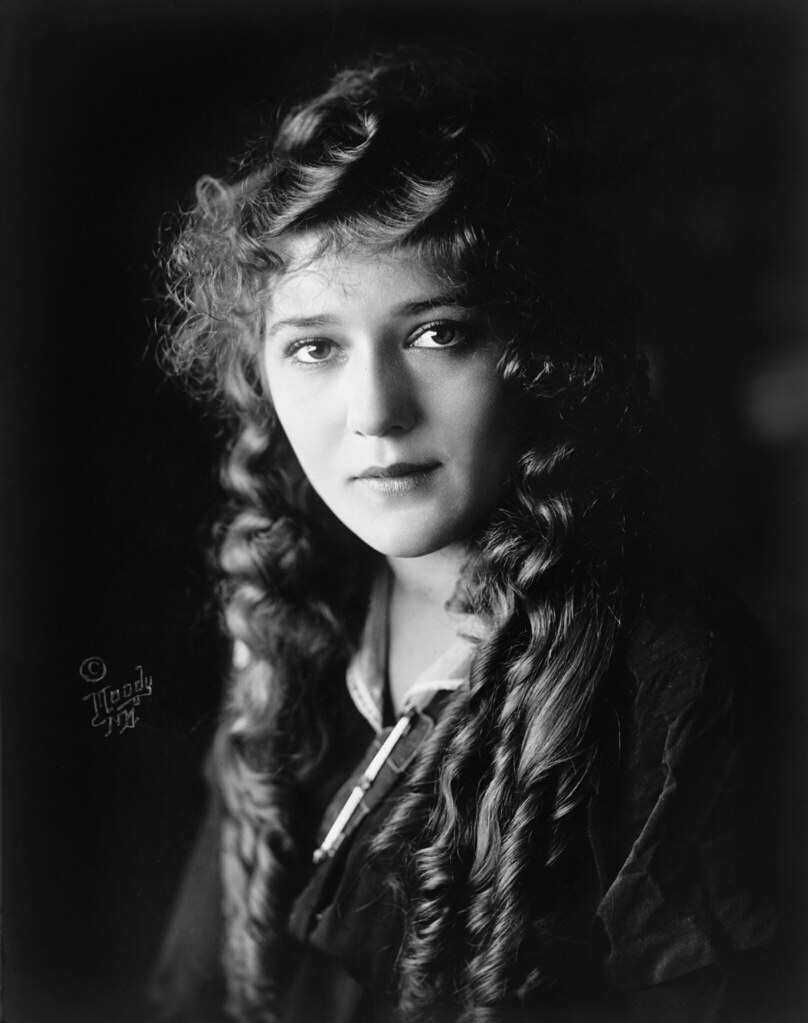
“Mary Pickford by Moody, ca. 1914” by trialsanderrors is marked with CC BY 2.0.
Pickford’s special personal interest in Spurr’s career was matched or exceeded by the popularity of his photographs her distributed to the public. The film indutrsy and public’s insatiable interest in Spurr’s portraits following his published Mary Pickford shots made Spurr overnight one of the most popular celebrity portrait photographer in Hollywood. By the mid1920’s Melbourne Spurr was one of the most popular celebrity photographers in the world.
Spurr’s sitters through the roaring 20’s included, among many others, Mary Astor, Marion Davies, Pola Negri, Theda Bara, Norma and Constance Talmadge, Harold Lloyd, Buster Keaton, Fatty Arbuckle, John Barrymore, Lucille Ricksen—and, of course, Alice Terry.
Spurr’s portrait photograph of Alice Terry presents a very close-cropped close-up with piercing, radiant eyes, perfect lips, and rich toning.
Alice Terry (1900-1987) began her career as a film actress and director in the silent film era.
Between 1916 and 1933 Terry appeared in 39 films. She started in Not My Sister in 1916. That same year, Terry made the anti-war film, Civilization. In 1921 she starred as Marguerite Laurier, her most acclaimed role, in prominent Irish director Rex Ingram’s film, The Four Horsemen of the Apocalypse. Alice Terry and Rex Ingram married that same year.
In 1925, Rex Ingram (1892-1952), was a director on Ben-Hur, an extravaganza production that started in 1923 and became one of the biggest box-office hits of the decade. Working on this film in Italy gave Alice Terry and Rex Ingram the idea to relocate to Nice on the French Riviera and set up their own film studio. In the next years the expatriate actress-director and director made several films for M-G-M on-location in southern Europe and North Africa. Alice Terry made her final film in 1933 in an appearance in Baroud, a film she and Rex Ingram co-directed.
With studio consolidation and competition becoming more intense, major movie studios mandated that their stars be photographed only by studio photographers. So was inaugurated the age of motion picture inhouse operators heralding the legendary careers of glamour portrait photographers George Hurrell, Clarence Sinclair Bull, Eugene Robert Richee and others. Since Spurr chose to keep his own studio and not work for a major studio, he began to lose business. It had been for one glorious decade—the 1920’s— that Melbourne Spurr shined in Hollywood.
https://www.portrait.gov.au/people/melbourne-spurr-1917
http://library.rit.edu/findingaids/html/RITDSA.0011.html


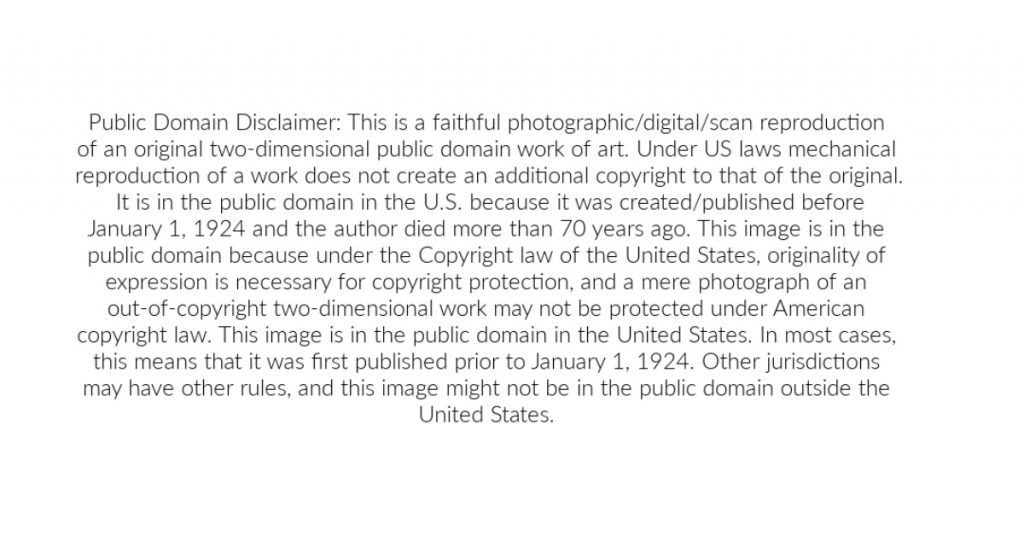


FEATURE image: Ethel Barrymore on the cover of The Theatre in August 1901 following the close of the successful Captain Jinks of the Horse Marines which ran on Broadway for 168 performances from February to July 1901 and made 22-year-old Ethel Barrymore a star. Public Domain.

By John P. Walsh
Stage and screen actress Ethel Barrymore (1879-1959) was the sister to older brother Lionel (1878-1954) and younger brother John (1882-1942) Barrymore. Though Ethel Barrymore was absolutely devoted to the stage from her youth, she began to appear in major silent films starting in 1914. Much later, in the 1940’s, the veteran stage actress was nominated twice for an Academy Award for Best Supporting Actress. She won the golden statuette in 1944 for her role as Ma Mott in the film None but the Lonely Heart starring Cary Grant who used a Cockney accent for his part.
By the time Barrymore appeared in her first feature motion picture, The Nightingale, in 1914, she was a celebrated stage actress on both sides of the Atlantic. Coming from the famous American acting family of Drews and Barrymores, the just 16-year-old Ethel Barrymore made her Broadway stage debut in 1895 alongside her uncle, John Drew, Jr. (1853-1927).
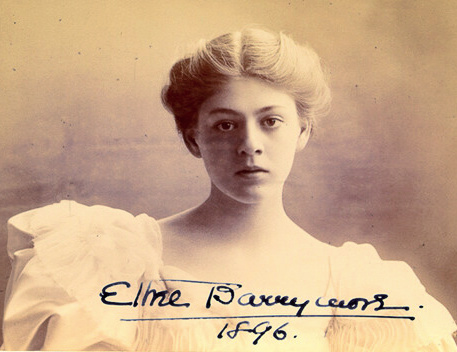

Before she was 20 years old, Ethel appeared several times on the London stage. Her first role was that of Miss Kittridge in William Gillette’s new play, Secret Service (1895). After that show closed, she was offered and played other roles on the London circuit. By the turn of the 20th century, a vibrant and talented Ethel Barrymore gained the especial attentions of several male admirers that included dukes, actors, writers and politicians.

One such admirer of Ethel Barrymore was eligible bachelor, enthusiastic theater hound, and nascent politician Winston Churchill (1874-1965). Though Ethel had many propositions and proposals in this period—she was even briefly engaged to a man until Ethel broke it off—any marriage proposal made to her by Churchill was refused. Churchill and Barrymore, however, became lifelong friends.
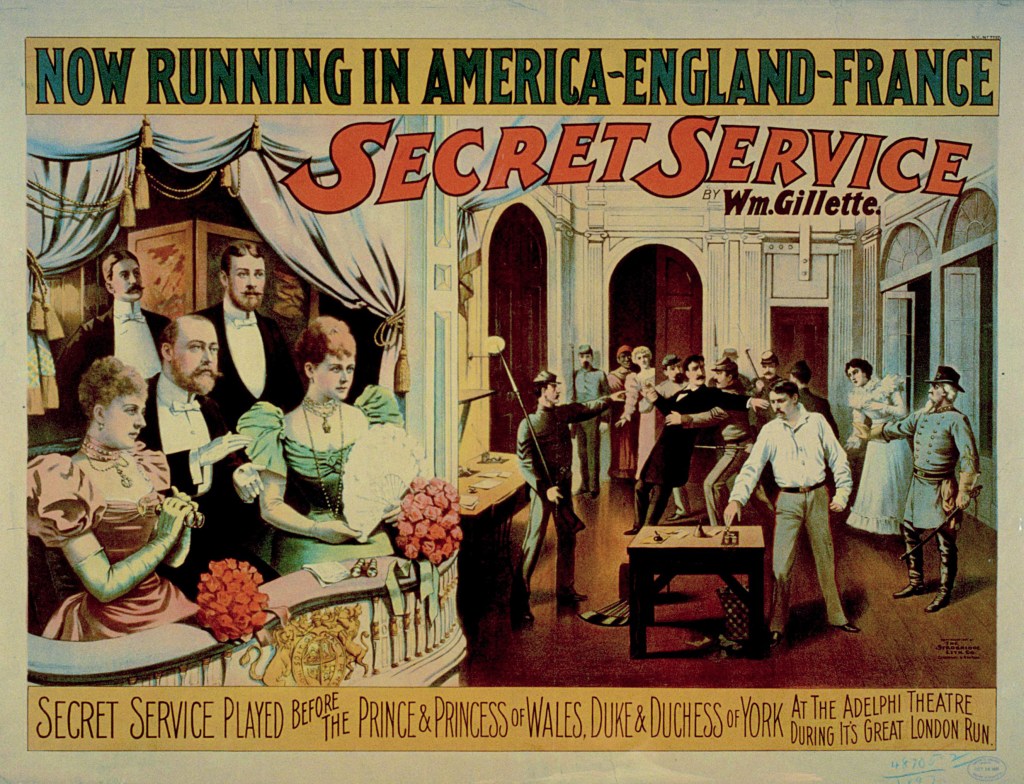



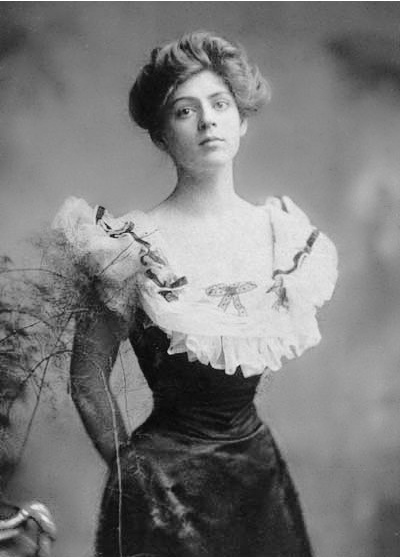
When Ethel returned to the United States, she began to appear in various stage productions. It was in 1901 when the 22-year-old actress was cast in the role of Mrs. Trentoni in Clyde Fitch’s Captain Jinks of the Horse Marines on Broadway that Ethel Barrymore became a star.

Clyde Fitch’s Captain Jinks of the Horse Marines introduces Robert Carrolton Jinks and his friends who form a club to boost the presidential campaign for General U.S. Grant in 1868. Calling themselves “Captain Jinks of the Horse Marines,” they think to try out their marching abilities by greeting the arrival of a steamer carrying Madame Trentoni, a famous opera singer. Though sight unseen, Jinks bets money that he can make Madame Trentoni fall in love with him. The boat is late and everyone leaves the dock except for a gaggle of reporters who wait to greet the opera singer. When Jinks returns, after he lays eyes on Madame Trentoni (played by Ethel Barrymore) he falls in love with her. After Captain Jinks sees she is having trouble at customs, he pulls out money which the customs official mistakes for a bribe and Jinks is promptly arrested.



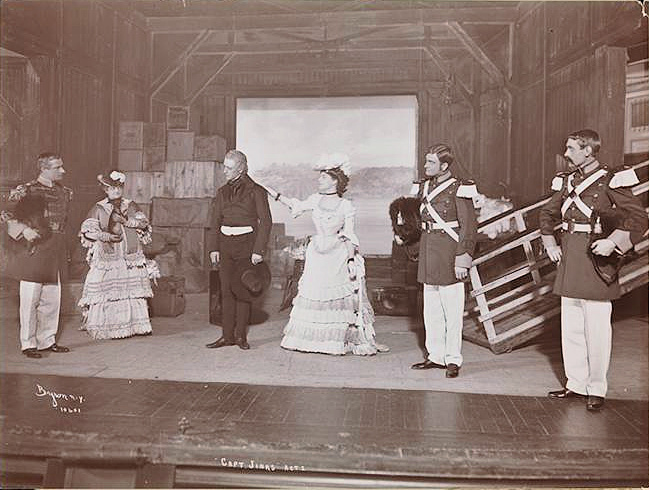


When Jinks is released on bail he calls on Madame Trentoni who has stopped to visit her foster father. She is as much in love with him as he is with her and their courtship progresses rapidly. When Jinks tries to call off the bet he made with his friends, they refuse until he finally agrees to pay off the bet with an I.O.U.
Jinks’ friends are also smitten with Madame Trentoni but she is totally uninterested in them. This gets them angry and they decide to ruin it for Jinks. They tell Madame Trentoni’s foster father that jinks intends to marry Madame Trentoni solely for her money — and as proof pull out the signed I.O.U. that says “I.O.U. $1,000 for the bet regarding Madame Trentoni.” The foster father flies into a rage, tells Madame Trentoni about the I.O.U, and she decides to never see Jinks again.




Jinks has no idea why Madame Trentoni is so angry at him. When he finally discovers what his friends have falsely told her, he tries to gain admittance to her apartment to tell her the truth. When she learns the real facts of the matter, Madame Trentoni throws her arms around her Captain Jinks.
In that intimate position, a detective suddenly bursts into the room to arrest Jinks. In all the tumult surrounding the loss of his love interest, Jinks forgot to appear in court for his bribery case. It appeared Jinks had skipped bail. Madame Trentoni tells the detective that she and her sweetheart have had a misunderstanding and only now are having the chance to make up. Her plea and the promise that Captain Jinks will appear in court tomorrow for his case is approved by the detective, who departs. Captain Jinks and Madame Trentoni embrace, and the curtain goes down on the couple living happily ever after.
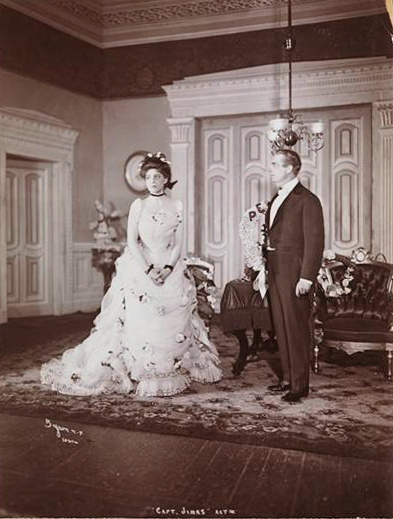






The public domain photographs above are in the archive of the Museum of the City of New York.













In the 20th century’s first decade, Ethel Barrymore became a theatrical celebrity. Her image was in demand in photographs and picture post cards of the time. Throughout the first third of the twentieth century, Barrymore continually appeared in popular stage productions. Following the success of Captain Jinks of the Horse Marines, Barrymore appeared in the next years in many top-rated popular Broadway productions.
A few highlights included in 1903 Barrymore appearing for 60 performances in the title role in Cousin Kate at the brand-new Hudson Theatre at 139–141 West 44th Street. In 1905 Barrymore played Norma Helmer in Henrik Ibsen’s A Doll House for 23 performances at The Lyceum Theatre at 149 West 45th Street. Also in 1905 Barrymore appeared in Alice Sit-by-the-Fire at the Empire Theatre. In 1908 Barrymore played the title role in Lady Frederick for 96 performances, again at the Hudson Theatre. There were a dozen more productions Barrymore was involved in before 1910.




With her film debut in 1914 in The Nightingale, a film written especially for her by playwright Augustus Thomas (1857-1934), Ethel Barrymore began in the new silent flickering medium of cinema in the footsteps of her brothers Lionel and John, who made their film debuts a couple of years earlier.
While Ethel made at least 14 films between 1914 and 1919 (some films are lost) she continued with her stage work and appeared in a dozen more Broadway productions throughout the 1910’s. When she decided to interrupt her film work in 1920 –and did not return to the movies until 1932 in the M-G-M film Rasputin and the Empress starring with her brothers (Ethel played Czarina Alexandra) – she appeared in a dozen more plays in the 1920’s, all in prominent Broadway theatres.
In 1922 she starred as Juliet in Shakespeare’s Romeo and Juliet for 23 performances at the Longacre Theatre at 220 West 48th Street as well as her celebrated role as Constance Middleton in Somerset Maugham’s new comedy play, The Constant Wife, in 1927. It ran for 296 performances at Maxime Elliot’s Theatre at 109 West 39th Street (it was demolished in 1960). The play had previewed in Cleveland, Ohio, at the Ohio Theatre in early November 1926 with Ethel Barrymore in the title role. It opened on Broadway at the end of November 1926 and ran until August 1927. After the Broadway show closed, Ethel Barrymore toured the production. Maugham dedicated his play to Ethel Barrymore and later said her performance was by far the best of any he had seen given for any of his plays.
Barrymore’s extensive stage work in this period also included, in 1928, appearing in the role of Sister Gracia in The Kingdom of God. The play was selected by Ethel Barrymore herself as the premier production in the Schubert Theatre chain’s newly-built 1,058-seat venue at 243 W. 47th Street in New York City. The new Broadway venue was named the Ethel Barrymore Theatre. Since its opening on December 20, 1928, the Ethel Barrymore Theatre has, without exception, presented legitimate Broadway productions continuously from that time to the present day.
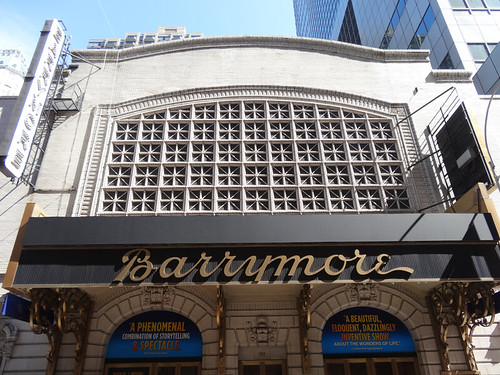
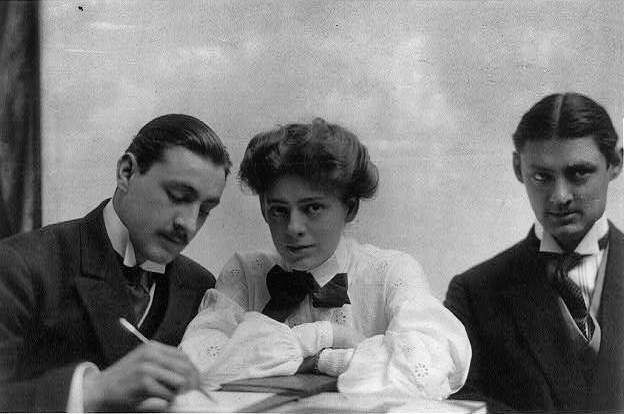





FEATURE image: Hedy Lamarr, M-G-M, 1940. Photograph by László Willinger (1909-1989).
PHOTO credit: Fair use.*

Hedy Lamarr (1914-2000) posed for the glamour portrait (above) in 1940. The legendary Austrian beauty in Hollywood was 27 years old. Since her first American film in 1938, Algiers from United Artists, Lamarr was believed to be the most beautiful women in the movies, if not the world. Her beauty was so great that when she entered a room all activity in it stopped so to admire her.
The publicity photograph of Lamaar was for the 1940 American adventure film Boom Town from Metro-Godwyn-Mayer. It co-stars Clark Gable, Spencer Tracy and Claudette Colbert. Boom Town was the highest grossing film of 1940.

PHOTO credit: Fair use.*
The beautiful color portrait of its co-star was taken by László Willinger (1909-1989). Willinger was a German-born emigré who made many glamour photographs of celebrities starting in the later 1930’s.

In Boom Town, Austrian-born Lamarr plays Karen VanMeer, a sophisticated and elegant corporate spy. She is recruited by Clark Gable who plays “Big John” McMasters, an oil speculator.
M-G-M splurged on its star power to turn a routine oil-well story into a four-time Academy Award-nominated money gusher called Boom Town. The field was crowded with new films in 1940 just from M-G-M studio, including 18 pictures in Technicolor. Escapism was still the most rewarding M-G-M product.
Producer Sam Zimbalist brought big names to the screen in Clark Gable, Spencer Tracy, Claudette Colbert, and Hedy Lamarr backed up by an “A” list screenplay and Jack Conway’s forceful direction. The movie was the first Gable made under a new seven-year contract with MGM.

PHOTO credit: “Hedy Lamarr” by floorvan is marked with CC BY-SA 2.0.


(colorized) PHOTO credit: “Hedy Lamarr 1914 – 2000” by oneredsf1 is marked with CC BY-NC-SA 2.0.

*The photograph copyright may be believed to belong to the distributor of the film, Metro-Goldwyn-Mayer, the publisher of the film or the graphic artist. The copy is of sufficient resolution for commentary and identification but lower resolution than the original photograph. Copies made from it will be of inferior quality, unsuitable as counterfeit artwork, pirate versions or for uses that would compete with the commercial purpose of the original artwork. The image is used for identification in the context of critical commentary of the work, product or service for which it serves as poster art. It makes a significant contribution to the user’s understanding of the article, which could not practically be conveyed by words alone. As this is a publicity photo (star headshot) taken to promote an actress, these have traditionally not been copyrighted. Since they are disseminated to the public, they are generally considered public domain, and therefore clearance by the studio that produced them is not necessary. (See- Eve Light Honthaner, film production expert, in The Complete Film Production Handbook, Focal Press, 2001 p. 211.) Gerald Mast, further, film industry author, in Film Study and the Copyright Law (1989) p. 87, writes: “According to the old copyright act, such production stills were not automatically copyrighted as part of the film and required separate copyrights as photographic stills. The new copyright act similarly excludes the production still from automatic copyright but gives the film’s copyright owner a five-year period in which to copyright the stills. Most studios have never bothered to copyright these stills because they were happy to see them pass into the public domain, to be used by as many people in as many publications as possible.” Kristin Thompson, committee chairperson of the Society for Cinema and Media Studies writes in the conclusion of a 1993 conference with cinema scholars and editors, that they “expressed the opinion that it is not necessary for authors to request permission to reproduce frame enlargements … [and] some trade presses that publish educational and scholarly film books also take the position that permission is not necessary for reproducing frame enlargements and publicity photographs.”(“Fair Usage Publication of Film Stills,” Kristin Thompson, Society for Cinema and Media Studies.)

**This work is in the public domain in the United States because it was published in the United States between 1927 and 1977, inclusive, without a copyright notice. Note that it may still be copyrighted in other countries.


FEATURE image: Madame Bovary (Jennifer Jones) and Rodolphe Boulanger (Louis Jourdan) waltz at the ball in a still from Metro-Goldwyn-Mayer’s 1949 film Madame Bovary directed by Vincente Minnelli. Fair Use.
In the 1949 film Madame Bovary directed by Vincente Minnelli, a beautiful and charming Madame Bovary (Jennifer Jones) meets wealthy Rodolphe Boulanger (Louis Jourdan) at a ball where he literally sweeps her off her feet. Selfishly aggravated by her husband Charles Bovary (Van Heflin) for not fitting into high society, Madame Bovary begins a love affair with Rodolphe. Though the pair scheme to elope to Italy, Rodolphe does not love Madame Bovary.
One of the film’s most carefully wrought and delightful scenes is this ballroom sequence. It was one of the last segments to be shot. The film footage was tailored to Miklós Rózsa’s music. Minnelli explained to the composer in advance the camera movements so he could write the music in an arrangement for two pianos. The scene was then filmed to match it. Their artistic collaboration produced one of cinema’s most original scenes uniting robust music with weaving and gliding images on film.

Madame Bovary (Jennifer Jones) and Rodolphe Boulanger (Louis Jourdan) waltz at the ball. It is one of the film’s most delightful scenes and one of the last to be shot. Director Vincente Minnelli made certain its choreography carefully matched the music of Miklós Rózsa. Madame Bovary was nominated for an Oscar for Best Art Direction-Set Decoration, Black-and-White.

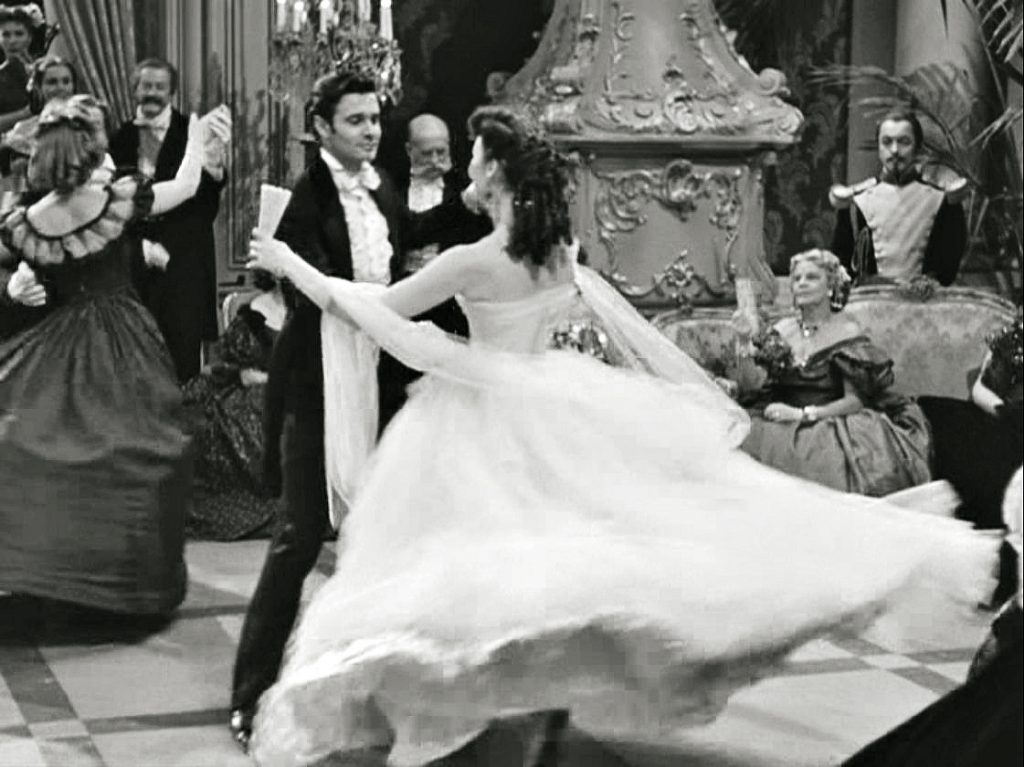

As Rodolphe swirls her, Emma Bovary’s head spins until she becomes dizzy. The viewer sees her disorientation as the camera takes her viewpoint. She keeps dancing but asks for fresh air. Her request leads to an extraordinary and incredible reaction by the stewards. They start to smash the ballroom’s windows with chairs to help her cool down. This fantastically destructive action of broken glass aligns with the destruction of Emma’s romantic illusions throughout the film.

In reaction to Madame Bovary becoming dizzy while waltzing with a new lover, the stewards smash the ballroom windows to give her air. The extraordinary action ultimately becomes symbolic of the destruction of Madame Bovary’s romantic illusions with handsome, wealthy Rodolphe and her own descent into madness.
Along with her husband’s boorish behavior at the ball and everywhere else, Madame Bovary’s romantic disappointment leaves her feeling publicly humiliated. Instead of love and excitement, Madame Bovary runs out of the ball in shame. Though she yearns for happiness and excitement, her pursuit of selfish pleasures ends in scandal and ruin.

Jennifer Jones as Madame Bovary offers a performance that is elegant and beautiful. It is equally insightful to the selfish and nervous personality of Flaubert’s fictional character.

A film poster for Vincente Minnelli’s Madame Bovary. Several different versions of the film poster were produced for the marketing of the 1949 film.

This publicity photo for Madame Bovary showed the love triangle of Madame Bovary (Jennifer Jones), her handsome lover Rodolphe Boulanger (Louis Jourdan), and her cuckolded husband Charles Bovary, a medical doctor (Van Heflin).

Thirty-year-old Jennifer Jones plays Gustave Flaubert’s doomed title character, Madame Bovary, from his 1856 serial novel.
Vincente Minnelli’s film of the same name offered two costume and wardrobe managers: Walter Plunkett for women and Valles for men.
Walter Plunkett (1902-1982) was a prolific costume designer who worked on more than 150 projects in his Hollywood career, including Gone With The Wind. In 1951, Plunkett shared an Oscar with Orry-Kelly and Irene Sharaff for An American in Paris.
Valles (1886-1970) specialized in men’s costumes at M-G-M. Valles received two Academy Award nominations, including Spartacus in 1960.

Van Heflin is Charles Bovary, whom Madame Bovary (Jennifer Jones) had loved and hoped to build a respectable life, but in whom she grew disillusioned.

A unique example of the Valles’ costume design for Louis Jourdan and Walter Plunkett’s costume design for Jennifer Jones for the 1949 film Madame Bovary. The next year, in 1950, both Valles and Walter Plunkett were nominated for the Academy Award for Compton Bennett’s That Forsyte Woman/Saga.

Madame Bovary danced wildly with Rodolphe at the ball and loves him. The illicit couple plan to elope to Italy. But Rodolphe leaves for Italy without her and shatters Madame Bovary’s spirit and dreams.

Costumes were by award-winning Valles and Walter Plunkett, both award-winning Hollywood costume designers.

Madame Bovary (Jennifer Jones) is indulged by an unscrupulous shop-keeper as she lives beyond her means in the pursuit of happiness. She takes on a heavy debt that is impossible to pay back.
The film plot is told from the point of view of the author, Gustave Flaubert (James Mason). A legal proceedings takes place where Flaubert is accused of corrupting morals by writing Madame Bovary. It is an historical fact that, in 1858, Flaubert and his publisher had faced government charges of immorality for Madame Bovary. But the outcome of the trial was that Flaubert was completely acquitted.

Charles, who never stopped loving his wife, begs her to wait for a doctor to arrive. Madame Bovary sighs, “Oh, Charles, why are you always trying to save me?”
From the waltz scene through to her death scene Jennifer Jones as Madame Bovary offers a performance that is elegant and beautiful. It also provides insight into the contradictions offered by a selfish and nervous personality.
In the end Madame Bovary finds that her own death is more attractive to her than living with her shattered dreams.

A 1949 film poster for Madame Bovary that includes a publicity head shot of James Mason as Gustave Flaubert, the novel’s French author.
Minnelli’s film is told in flashback through the character of Flaubert who is on trial for charges of immorality for writing the novel. After Flaubert’s work was serialized in the Revue de Paris in 1856, the government charged and tried the author and his publisher for immorality. Both were acquitted in 1859. After Madame Bovary appeared in book form in France, it became an instant classic.

Vincente Minnelli directs Jennifer Jones and Louis Jourdan in a scene from Madame Bovary.
Reviews from film critics had been mixed and Madame Bovary lost money at the box office. Whether it is the fault of the film-makers or the unhappy story becomes a debatable point.



*The photograph copyright may be believed to belong to the distributor of the film, Metro-Goldwyn-Mayer, the publisher of the film or the graphic artist. The copy is of sufficient resolution for commentary and identification but lower resolution than the original photograph. Copies made from it will be of inferior quality, unsuitable as counterfeit artwork, pirate versions or for uses that would compete with the commercial purpose of the original artwork. The image is used for identification in the context of critical commentary of the work, product or service for which it serves as poster art. It makes a significant contribution to the user’s understanding of the article, which could not practically be conveyed by words alone. As this is a publicity photo (star headshot) taken to promote an actress, these have traditionally not been copyrighted. Since they are disseminated to the public, they are generally considered public domain, and therefore clearance by the studio that produced them is not necessary. (See- Eve Light Honthaner, film production expert, in The Complete Film Production Handbook, Focal Press, 2001 p. 211.) Gerald Mast, further, film industry author, in Film Study and the Copyright Law (1989) p. 87, writes: “According to the old copyright act, such production stills were not automatically copyrighted as part of the film and required separate copyrights as photographic stills. The new copyright act similarly excludes the production still from automatic copyright but gives the film’s copyright owner a five-year period in which to copyright the stills. Most studios have never bothered to copyright these stills because they were happy to see them pass into the public domain, to be used by as many people in as many publications as possible.” Kristin Thompson, committee chairperson of the Society for Cinema and Media Studies writes in the conclusion of a 1993 conference with cinema scholars and editors, that they “expressed the opinion that it is not necessary for authors to request permission to reproduce frame enlargements … [and] some trade presses that publish educational and scholarly film books also take the position that permission is not necessary for reproducing frame enlargements and publicity photographs.”(“Fair Usage Publication of Film Stills,” Kristin Thompson, Society for Cinema and Media Studies.)


FEATURE image: “File:Michelemercier02b.jpg” by Roland Godefroy is licensed under CC BY-SA 3.0.
Michèle Mercier (born New Year’s Day 1939) is a French actress perhaps best known for playing the lead role of Angélique in the mid1960s film series of the same name based on the 1956 sensational novel Angélique, the Marquise of the Angels by husband and wife writing team of Anne and Serge Golon. Their mid-17th century character was based on a real life Suzanne du Plessis-Bellière who was one of France’s most famous women from the time of Louis XIV, the Sun King. The historical Suzanne first appeared in a French novel in the mid-nineteenth century, one by Alexandre Dumas, père, called Le Vicomte de Bragelonne, ou Dix ans plus tard. Similar to these 5 films inspired by the Golons’ novel of (by 1961) six books — Angélique, the Marquise of the Angels which is the first book published in 1957 (the novel expanded to 13 books after the 1964 film’s release) — Dumas’s novel, the third of his d’Artagnan trilogy, was also serialized in popular media from 1847 to 1850.
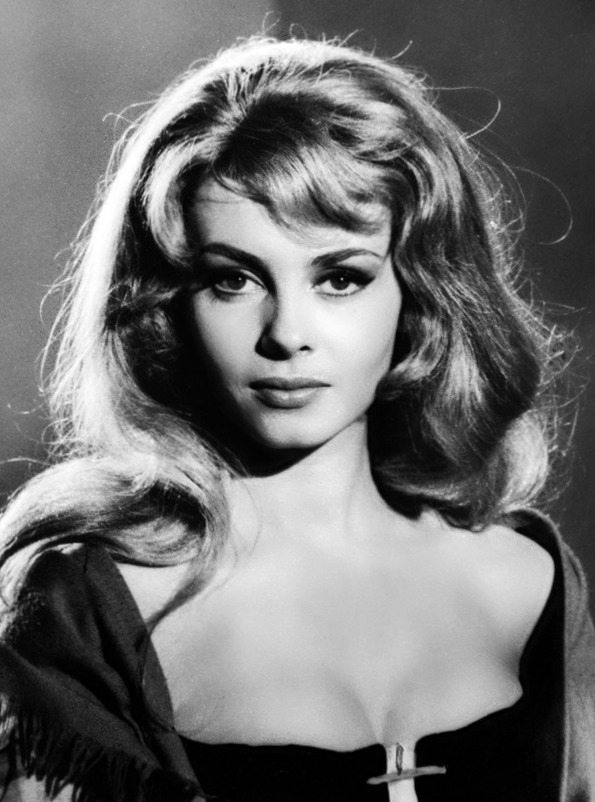
Michèle Mercier as Angélique is a French Italian beauty who has entered the pantheon of screen goddesses based largely on the legendary five-film role that stretched from 1964 to 1968.
For the part of Angélique, many other beautiful and more famous actresses were approached before Michèle Mercier who was little known in the French cinema at the time. Seasoned French film producer Francis Cosne (1916-1984) wanted sex symbol Brigitte Bardot to play the part, but she rejected the offer. Young Catherine Deneuve was considered perhaps too naive for the lusty role. American Jane Fonda spoke French but could an American play fully a quintessentially French role? Italian beauty Virna Lisi was too busy doing Hollywood films. Not being already famous eliminated statuesque Danish actress Annette Stroyberg from the running until ultimately Michèle Mercier was decided upon after almost losing the part to French actress Marina Vlady who at the last minute didn’t sign the contract.
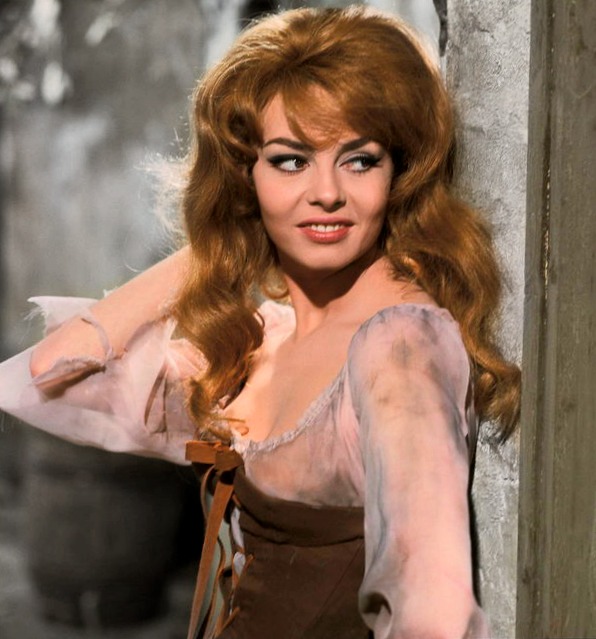
Michèle Mercier as Angélique.

When the opportunity of Angélique presented itself to Michèle Mercier, she was a relative newcomer to the French cinema – but this was not the case for her either in French theatre arts or Italian films where before 1964 she had acted in over 20 of them. With a father who was French and mother who was Italian, Michèle Mercier from her early teens growing up in Nice, France, was determined to be a professional ballet dancer. In 1957, at 17 years old, she moved to Paris which was a decision that changed her life. By 1960, when she was just 20 years old, she was acting in French New Wave film director François Truffaut’s second film, Shoot The Piano Player.

After Angélique, the Marquise of the Angels was released — an unlikely heroine’s role where Angélique’s singular flaming red-haired beauty is acknowledged throughout — the role became a blessing and a curse for the budding actress Michèle Mercier. It catapulted her to instant stardom so that her fame rivaled sex symbol Brigitte Bardot in celebrity and popularity, but the role in 5 popular films typecast her and effectively ended her film career almost as soon as it started. Following the first Angélique film in 1964 Michèle Mercier starred in four sequels that includes Merveilleuse Angélique in 1965, Angélique et le Roy in 1966, Indomptable Angélique in 1967 and Angélique et le Sultan in 1968. All these films in the series were directed by French film director Bernard Borderie (1924-1978) and starred Michèle Mercier which bestowed upon the stories a consistent filmic world but also encased the beautiful star in a popular role that was virtually impossible to escape from.
Following the fifth and final film of the Angélique series in 1968 the French Italian beauty went on to make six more films before her career ended in 1972. Although Michèle Mercier had always appeared in a variety of film genres – the actress played dozens of other women besides Angélique – it was for this 17th century fictional character in five memorable films in 1960’s France that has affixed her into the pantheon of screen goddesses for which she receives enduring adoration today.

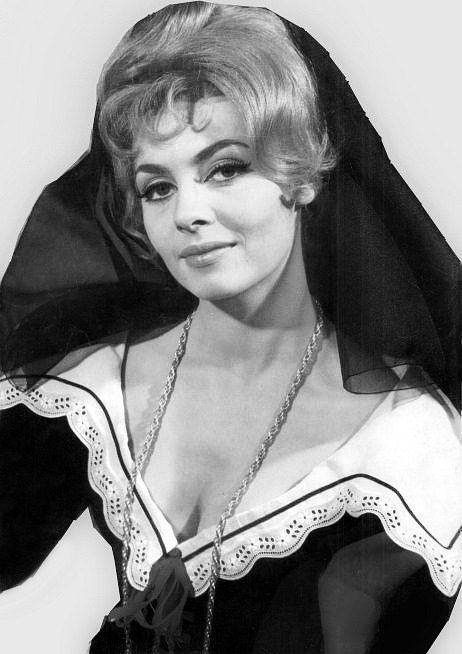
Michèle Mercier in 1965.
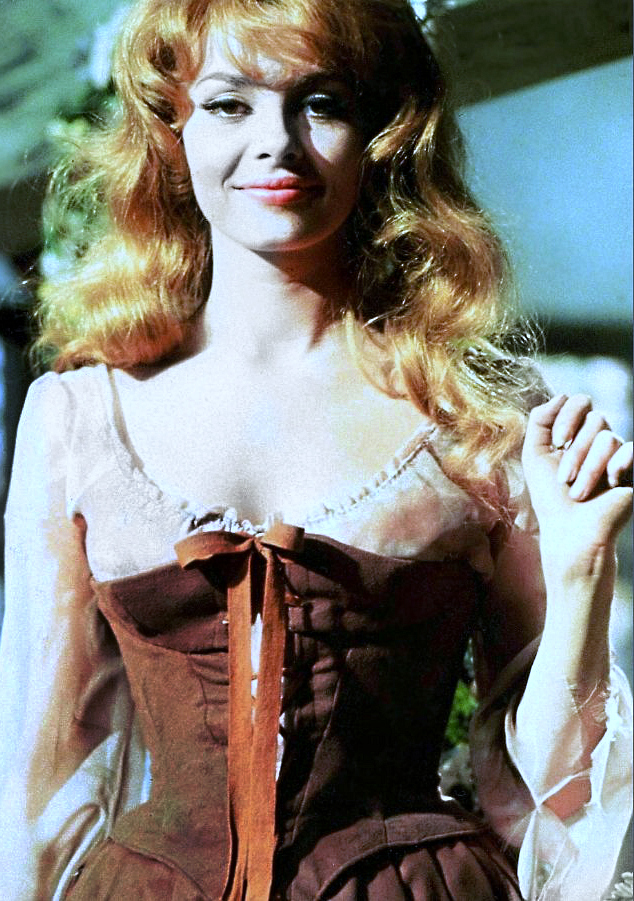

Michèle Mercier on the cover of the April 20-26, 1968 French weekly magazine, Télé 7 Jours with Jacques Chazot. In these months, Michèle Mercier was riding high in the Angélique film series. Indomptable Angélique had been released in October 1967 and was a world-wide smash hit. In the film, Angélique discovers that her first husband is alive and she Angélique travels to the South of France not realizing he is now an infamous pirate. Angélique is captured by slave traders and taken far away to Crete where they intend to sell her. In March 1968, Angélique et le Sultan had just been released. It became the fifth and unintended final entry in the Angélique series based on the novels of Anne and Serge Golon. A planned sixth film called Angelique the Rebel was announced but never made.
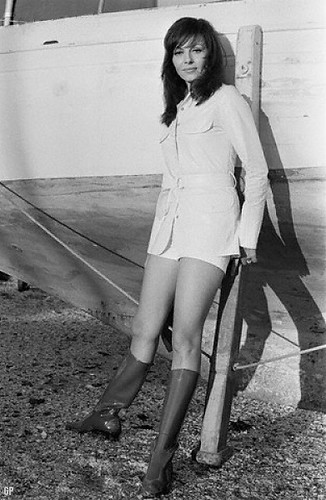

1964:
Angélique, Marquise des Anges
Michèle Mercier as Angélique
Directed by Bernard Borderie
Released December 8, 1964
Distributed by S.N. Prodi; Gloria Film; Butcher’s Film Distributors
1965:
Marvelous Angelique (Merveilleuse Angélique)
Michèle Mercier as Angélique
Directed by Bernard Borderie
Released July 7, 1965
Distributed by S.N. Prodi; Gloria Film
1966:
Angelique and the King (Angélique et le Roy)
Michèle Mercier as Angélique
Directed by Bernard Borderie
Released February 4, 1966
Distributed by Gloria Film
1967:
Untamable Angelique (Indomptable Angélique)
Michèle Mercier as Angélique
Directed by Bernard Borderie
Released October 27, 1967
Distributed by S.N. Prodi; Gloria Film
1968:
Angelique and the Sultan (Angélique et le Sultan)
Michèle Mercier as Angélique
Directed by Bernard Borderie
Released March 13, 1968
Distributed by S.N. Prodi; Gloria Film


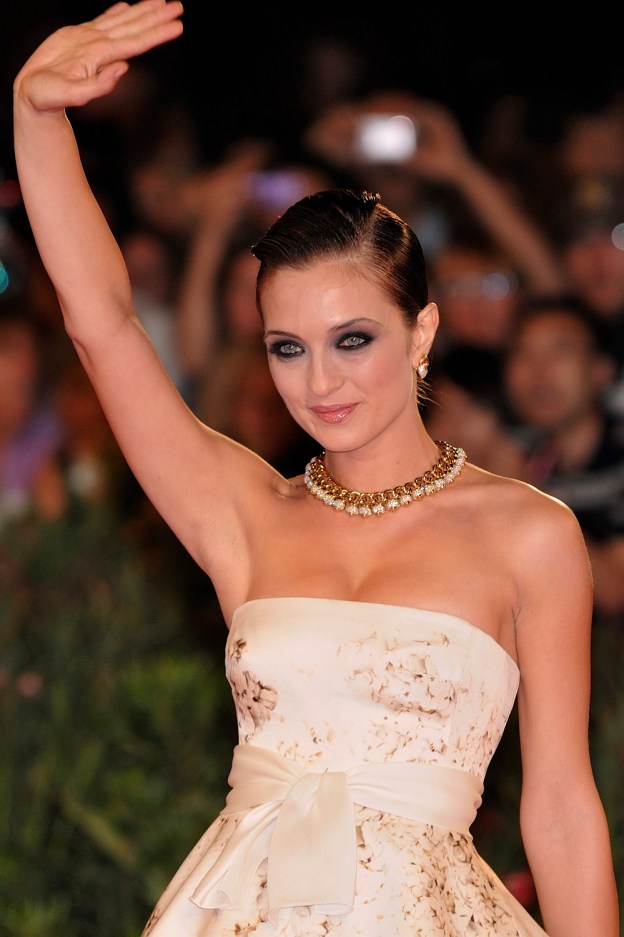

FEATURE image: “File:Carolina Crescentini.jpg” by Nicogenin is licensed under CC BY-SA 2.0.
Carolina Crescentini is an Italian film and television actress who has appeared in more than 20 films since 2006. Born in Rome in 1980 (April 18) Carolina grew up in the elegant Monteverde Vecchio district. Not unlike Grace Kelly of Philadelphia, Carolina wanted to become an actress from an early age and studied and worked diligently in the craft.
Carolina attended Italian acting schools including the Centro Sperimentale di Cinematografia – or, The Center for Experimental Cinematography. This Italian institution hosts a national film archives (Cineteca Nazionale) as well as one of Italy’s most prestigious film acting schools (Scuola Nazionale di Cinema).
Soon after, Carolina began her acting career in television commercials, short films and music videos. The blonde beauty whose stage presence is similar to Kate Hudson and whose fashion savvy is like Chloë Sevigny got her first big break in films from another Centro Sperimentale di Cinematografia alumni – Fausto Brizzi.
It was in the sequel to Brizzi’s 2006 film Notte prima degli esami (The Night Before The Exams). The original film was a phenomenon in Italy. It earned around 15 million euros and won the David di Donatello Award (the Italian Oscar) and several more awards.
In Brizzi’s 2007 hit Italian teen comedy Notte prima degli esami – Oggi (The Night Before The Exams – Today), Carolina Cresentini plays Azzurra, the love interest of the main character. Where Brizzi’s 2006 teen comedy is set in Rome in 1989, the 2007 sequel which featured many of the same actors in the same roles—with the addition, of course, of Carolina Crescentini— it is set in the summer 2006. This is the same summer Italy played for the World Cup which they won that year.
Brizzi’s sequel and Carolina’s first major film was an even bigger hit than the original. Even the French film industry made a version of Notte prima degli esami calling it Nos 18 ans and featuring French teenagers set in 1989.

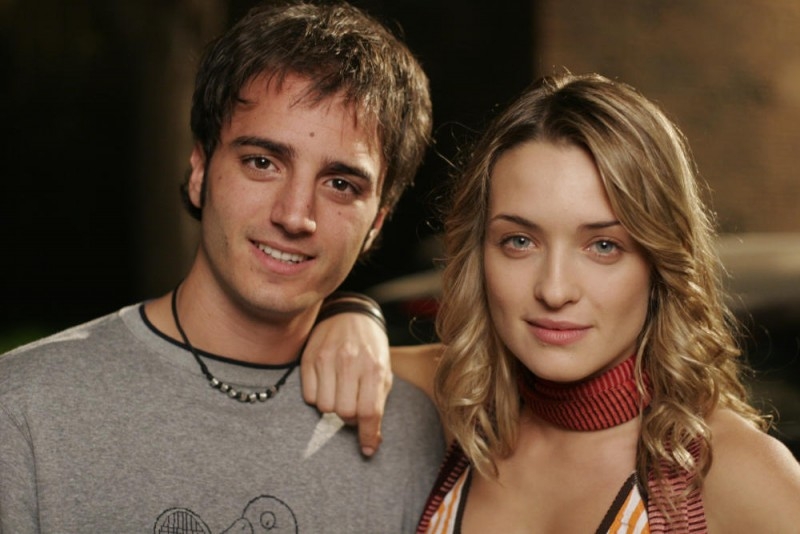
Within the year of her first major film Carolina immediately co-starred with Italian star Nicolas Vaporidis in Cemento armato (Concrete Romance). It is a 2007 Italian neo-noir thriller directed by Marco Martani. Crescentini’s dramatic performance as Asia, a rape victim, earned her a Best Actress nomination at the prestigious Nastro d’Argento (Silver Ribbon) Awards.
The next year, in 2008, Carolina was nominated for a David di Donatello Award for Best Supporting Actress for playing Benedetta, a fragile and spoiled rich beauty pursued by Silvio Muccino in Parlami d’amore (Speak to me of love). The film became another smash hit in Italy that year.

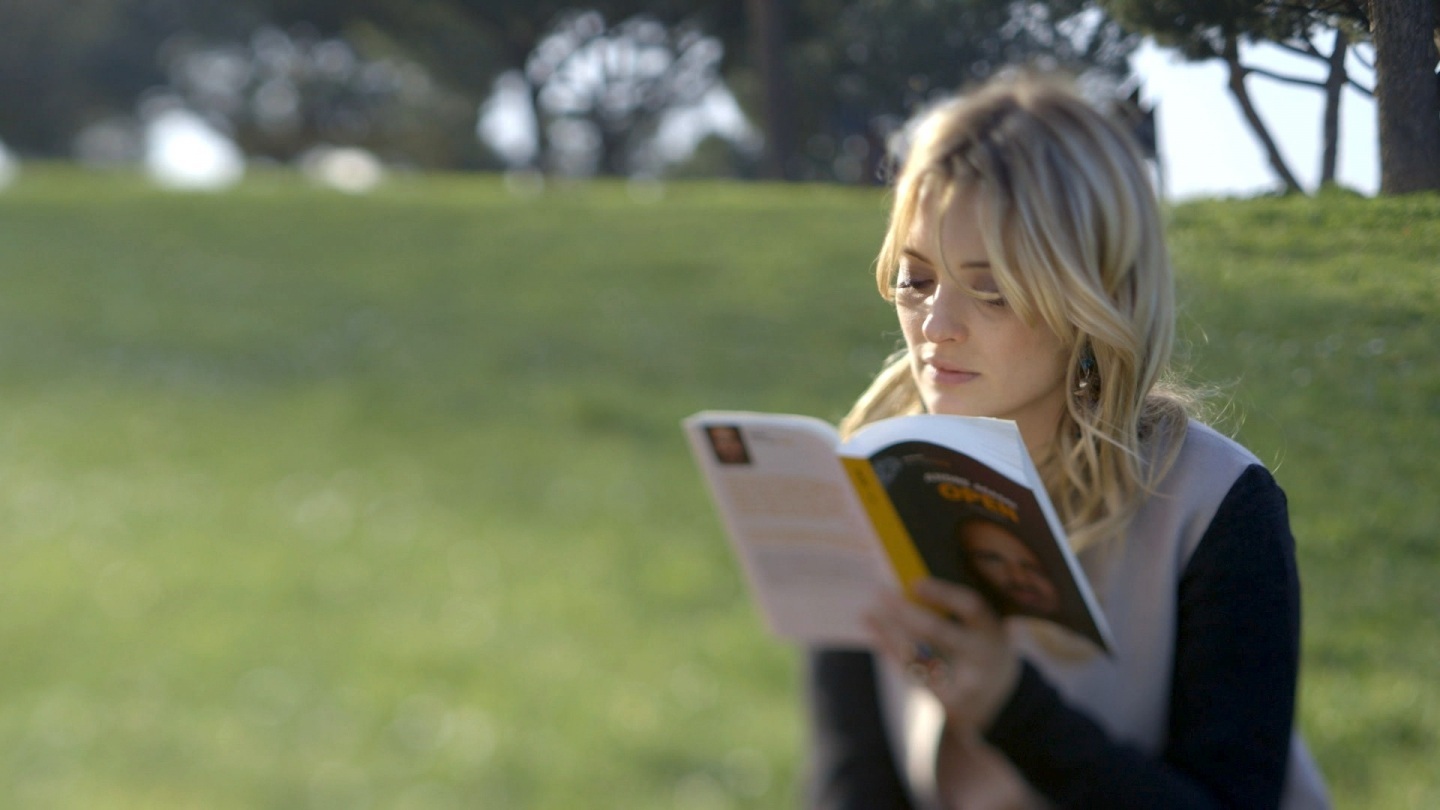

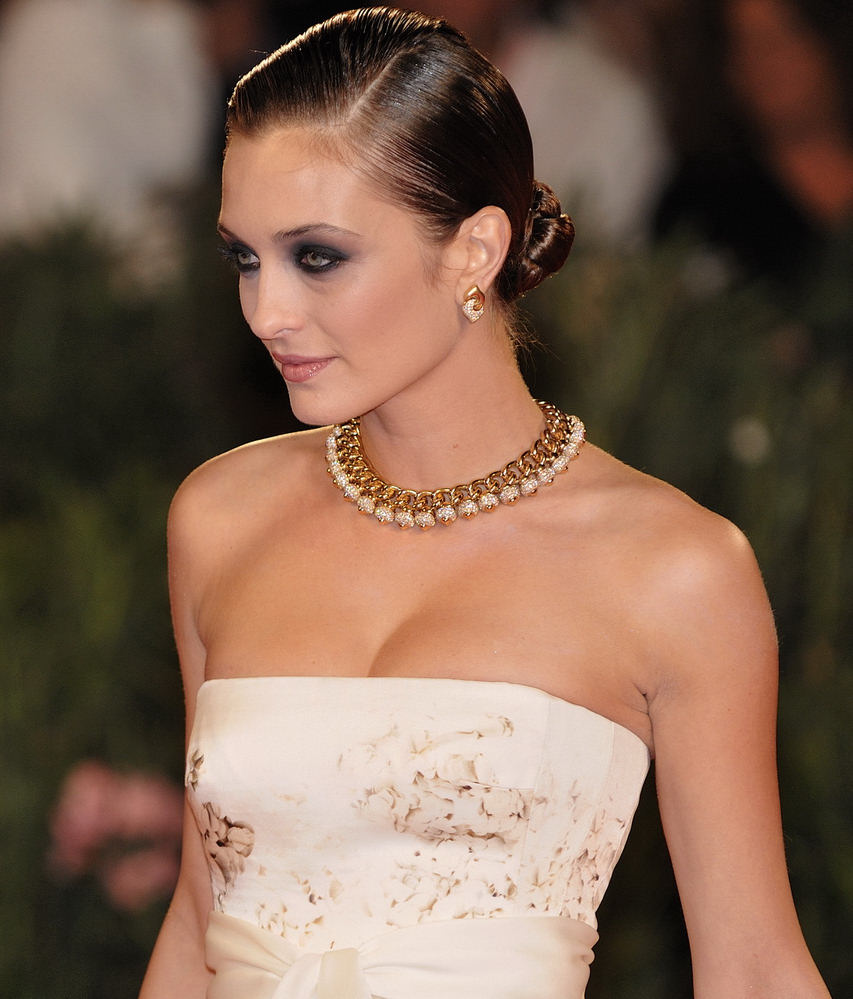
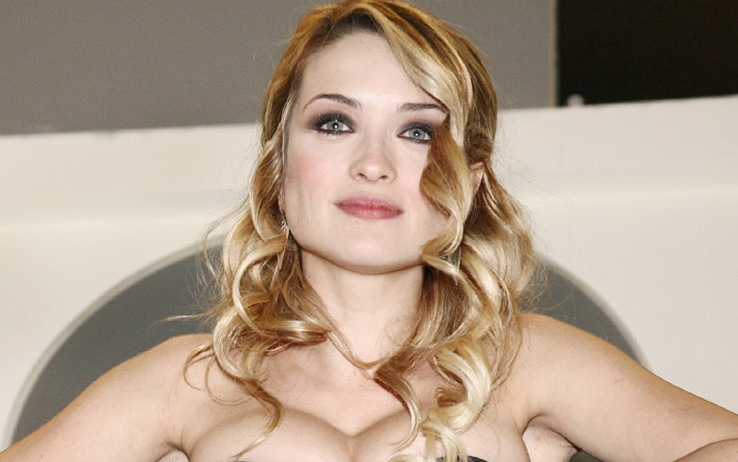
Carolina made films where her roles were smaller but memorable. She played Anna in veteran Italian director Giuliano Montaldo’s I demoni di San Pietroburgo (The Demons of St. Petersburg). It is a bio-pic about Russian novelist Fyodor Dostoevsky. With a soundtrack by prolific Ennio Morricone, Carolina said her experience for this 2008 film on location in Russia was very beautiful.
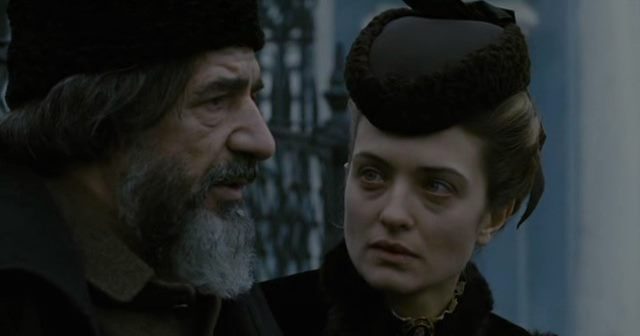
In 2010 Carolina’s body of work was again recognized by winning the Giuseppe De Santis Award for Best Female Newcomer as well as the Giffoni Award at that venerable international children’s film festival.
In 2011 Carolina won the People’s Choice Ciak D’Oro award for Best Supporting Actress playing Corinna in the 2011 Italian comedy film Boris-Il Film which was based on a popular Italian TV series of the same name.
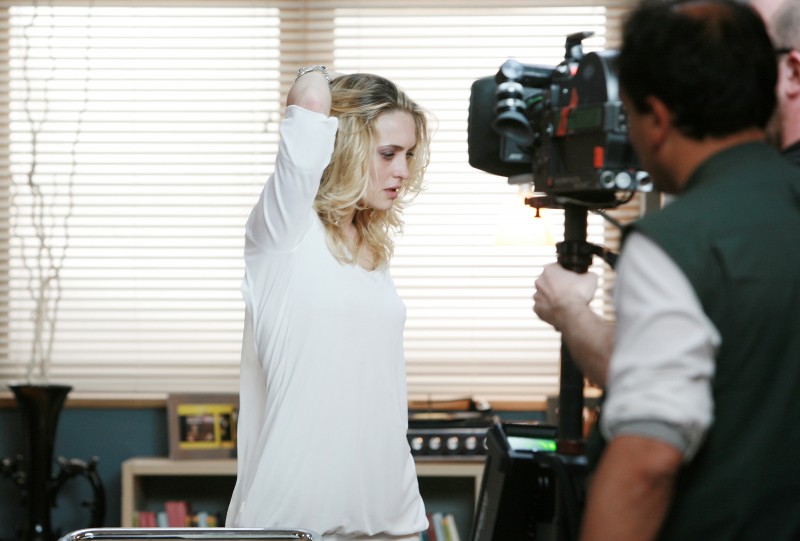
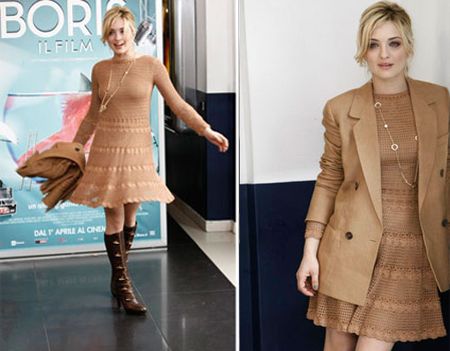
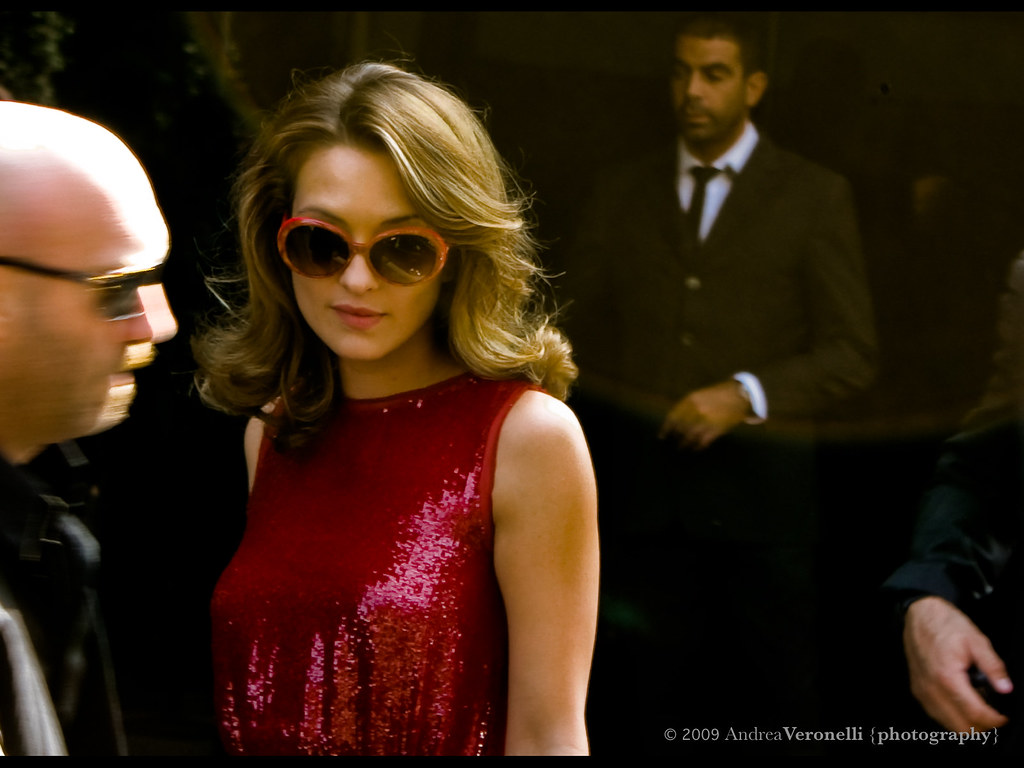

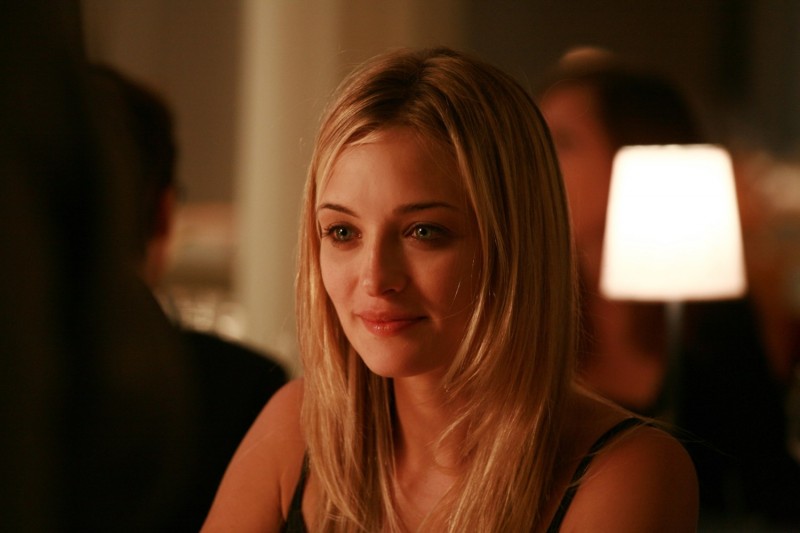
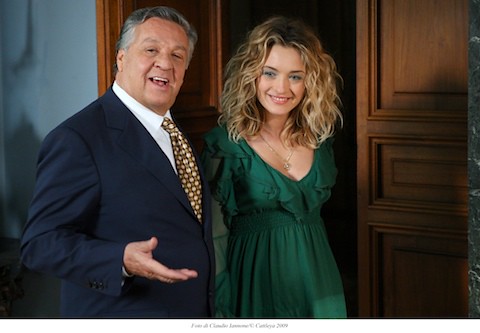
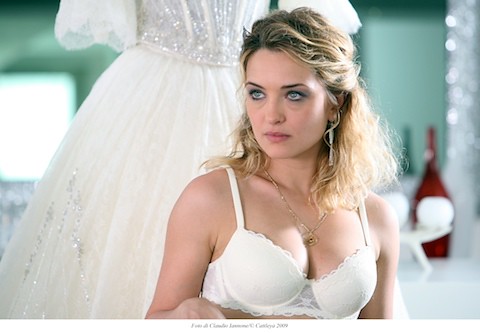
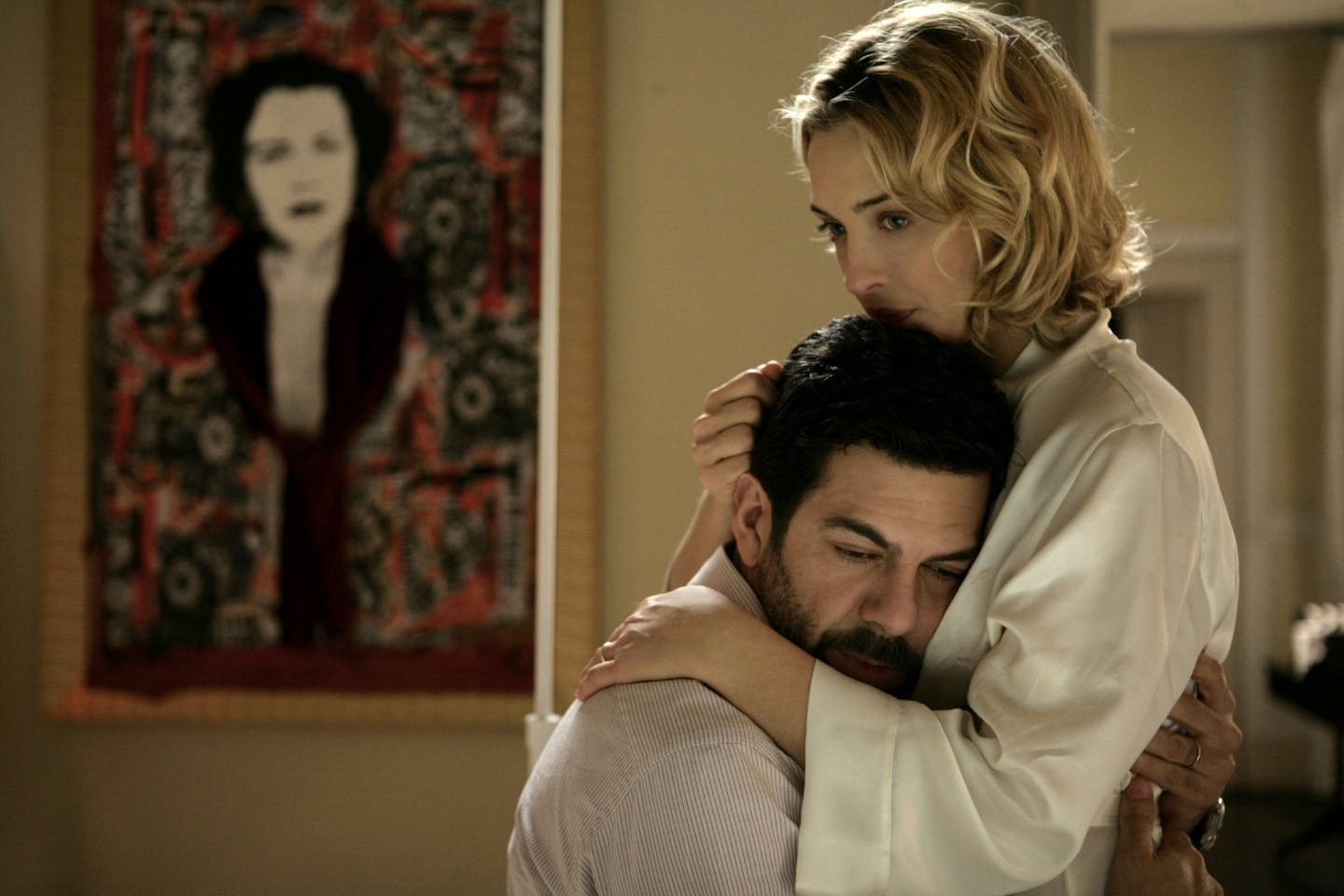
In addition to regular work in Italian TV series and movies including the series I bastardi di Pizzofalcone (2017) and movie Donne:Pucci (2016), Carolina Crescentini is a fashion icon in Italy wearing designs by prestigious fashion houses, both old and new, Italian and international.
Carolina has appeared on magazine covers including her shoot for Playboy in May 2010. Carolina said that in shots must have been “photoshopped” becausee in them she can’t recognize herself.
![Tu Style Magazine [Italy] (9 May 2016)](https://jwalsh2013.files.wordpress.com/2017/10/tu-style-magazine-italy-9-may-2016.jpg)
Carolina’s recent film work includes Tempo instabile con probabili schiarite (Partly Cloudy with Sunny spells), a 2015 Italian comedy about business partners who find oil on their land at the same time their furniture factory is going out of business. Carolina plays Elena, the wife of the lead.
She also appeared in the discomfiting satiric film called Pecore in erba (The Sheep in the Meadow, a.k.a. Burning Love) written and directed by Alberto Caviglia which debuted at the Venice Film Festival in 2015.
In 2015 Carolina worked once again with veteran Italian film directors— this time the brothers Taviani in their wry Maraviglioso Boccaccio (Wonderous Boccaccio). The film is based on vignettes from the fourteenth centuryThe Decameron. Both the book and the film premiered in Florence, albeit six centuries apart.
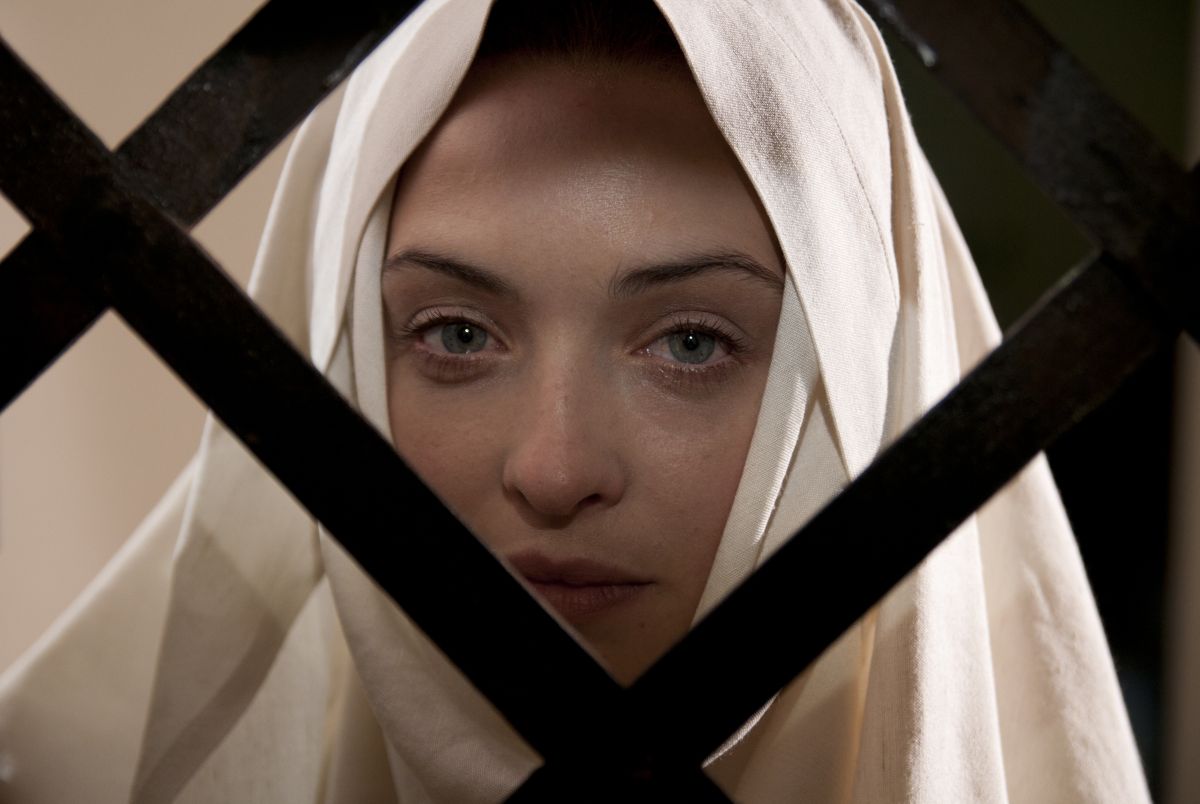
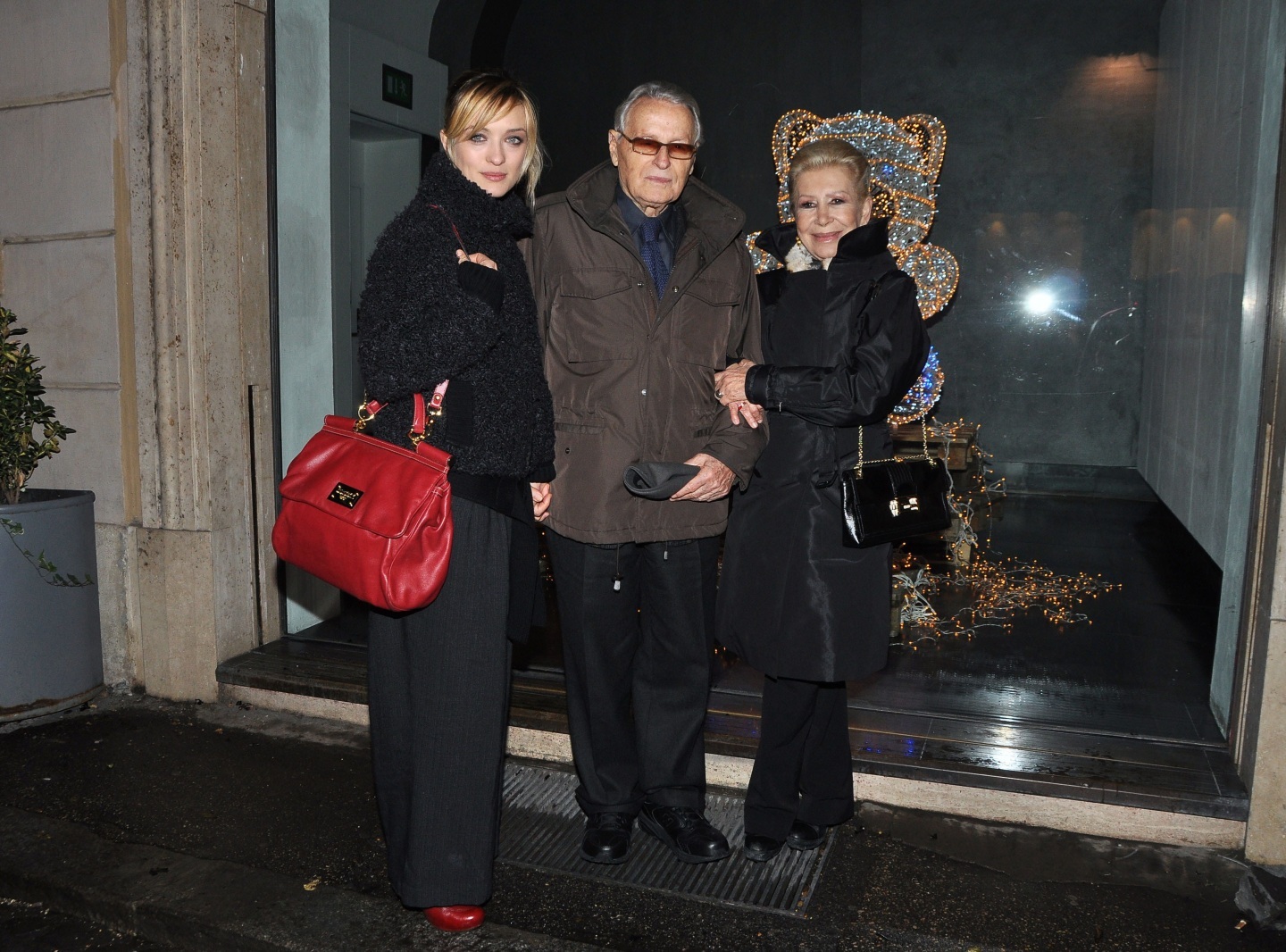

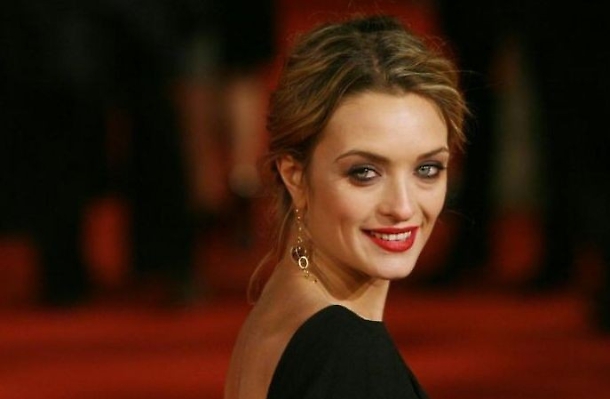



..
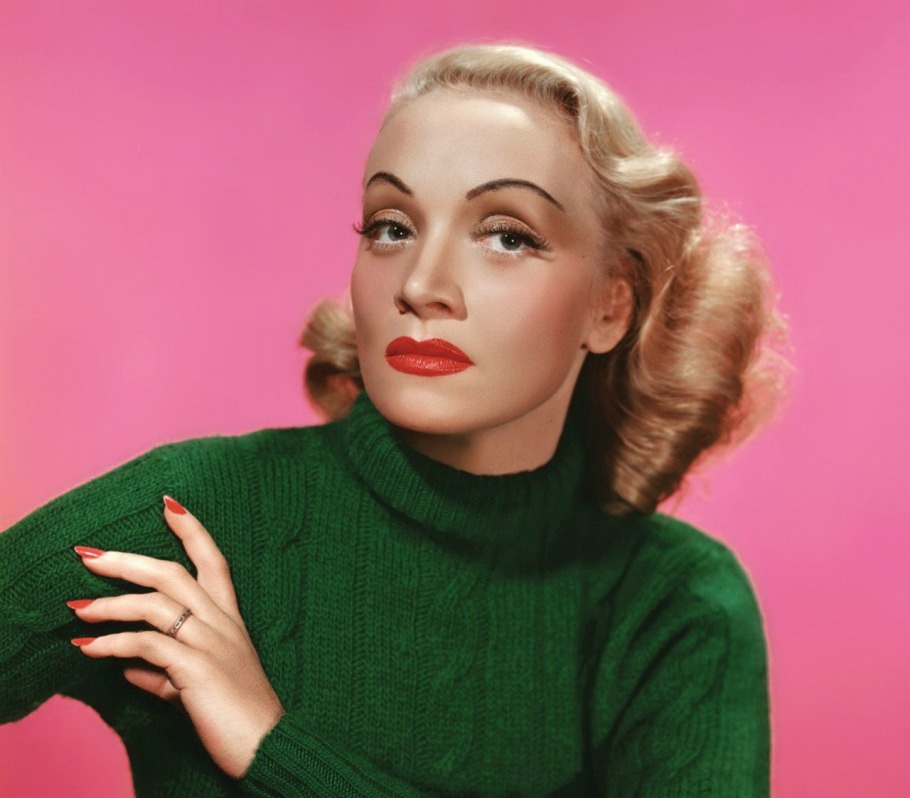

FEATURE image: Marlene Dietrich. Paramount, 1947. Photograph by A.L. “Whitey” Schafer. The actress was appearing in Golden Earrings, a 1947 romantic spy film made by Paramount Pictures and starring Ray Milland and Marlene Dietrich.*
This Hollywood glamour portrait of forty-six-year-old Marlene Dietrich (1901, Berlin – 1992, Paris) wearing a green turtleneck sweater was taken when the movie actress was starring in Golden Earrings, a romantic spy film made by Paramount Pictures. It was her comeback film following World War II.
Like other leading ladies in the 1940’s, the Hollywood glamour machine transformed Dietrich into a golden-haloed blond which accentuated her magnificent cheekbones and sultry eyes under penciled-arc eyebrows and painted nails that A.L. “Whitey” Schafer’s color portrait makes evident.
It was also in 1947—the same year that the photograph was made— that Dietrich received the Medal of Freedom. Dietrich called it her life’s proudest achievement.
While Golden Earrings was a decent film, its main purpose was to provide the actress with a job. It led into her next project—the 1948 American romantic comedy A Foreign Affair directed by Billy Wilder. That film made Dietrich again a top star.
Following Dietrich’s meteoric rise at Paramount Pictures starting in 1930 her acting parts later stagnated as film directors —including Josef von Sternberg and others—seemed to use her more as a piece of expensive cinematic scenery than as a serious dramatic actress.
Photographer A. L. “Whitey” Schafer (1902-1951) was a still photographer who started shooting stills in 1923 and continued in that line of work at Columbia Pictures when he moved there in 1932. Personally outgoing, Schafer was appointed head of the stills photography department at Columbia three years later. In the 1940’s Shafer wrote copiously on his craft and advocated for techniques in glamour photography that are seen in this Dietrich color portrait.
In 1941 Schafer published Portraiture Simplified, a book in which he argues that “portraiture’s purpose is the realization of character realistically.” Among his technical observations Schafer wrote elsewhere that “composing a portrait is comparable to writing a symphony. There must be a center of interest, and in all portraits this naturally must be the head, or your purpose is defeated. Therefore, the highest light should be on the head.”
In 1941 Schafer replaced Eugene Richee (1896-1972) as department head of still photography at Paramount Studios. Schafer remained in that position where he photographed the stars until he died at 49 years old in an accident in 1951.
Though still a teenager, Elizabeth Taylor (1932-2011) in 1949 when the publicity still photograph was made, was celebrated as the new generation’s great beauty. In 1942, at 10 years old, Elizabeth made her film debut and her life and beauty blossomed over the decade in front of the cameras. The photograph captures Taylor after she made a little over a dozen films. In 1950 she co-starred in M-G-M’s comedy film, Father of the Bride. Directed by Vincente Minnelli, Taylor played Kay, the daughter of Stanley T. Banks (Spencer Tracy) who is trying to cope with the preparations for her wedding day.
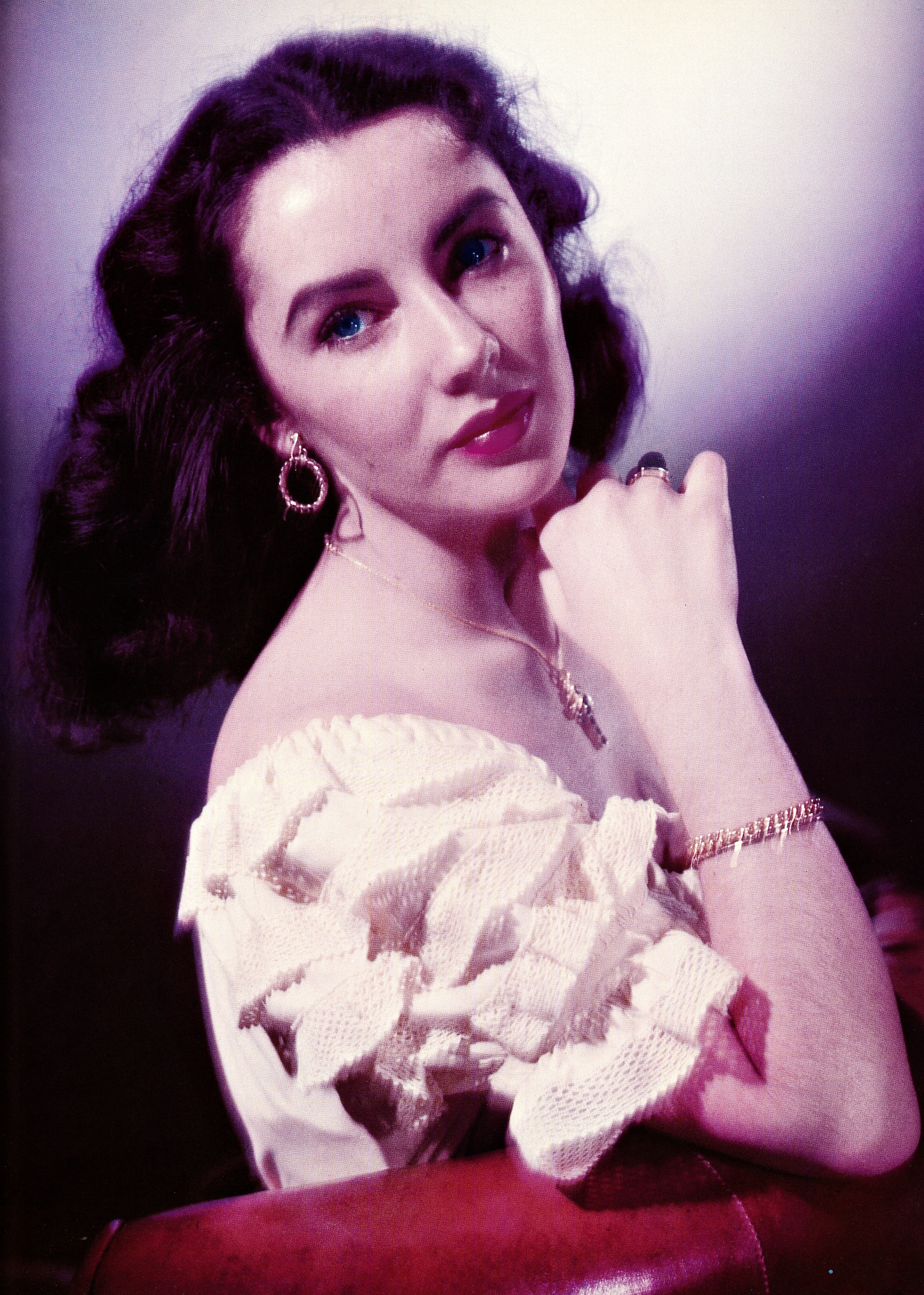
Who is Hymie Fink?
Who exactly was her photographer, Hymie Fink? His identity remains a mystery. Was Hymie Fink a studio photographer? Freelancer? Pseudonym for an unknown talent or combination of unknown talents? His name appears among the stars starting in the late 1930’s until his death was announced in the mid-1950’s by Hedda Hopper. The gossip columnist ended her newspaper column for September 28, 1956 with the epitaph: “Hymie Fink, one of the sweetest men in Hollywood, died of a heart attack on Jane Wyman’s TV set. Hymie photographed every star and every major event in (Hollywood) for twenty-five years.”
Before she became in the 1940’s the well-known Hollywood platinum sensuous blond of movie legend and fame, Lana Turner (1921-1995) was just a pretty redhead from Idaho named Julia Jean Turner.
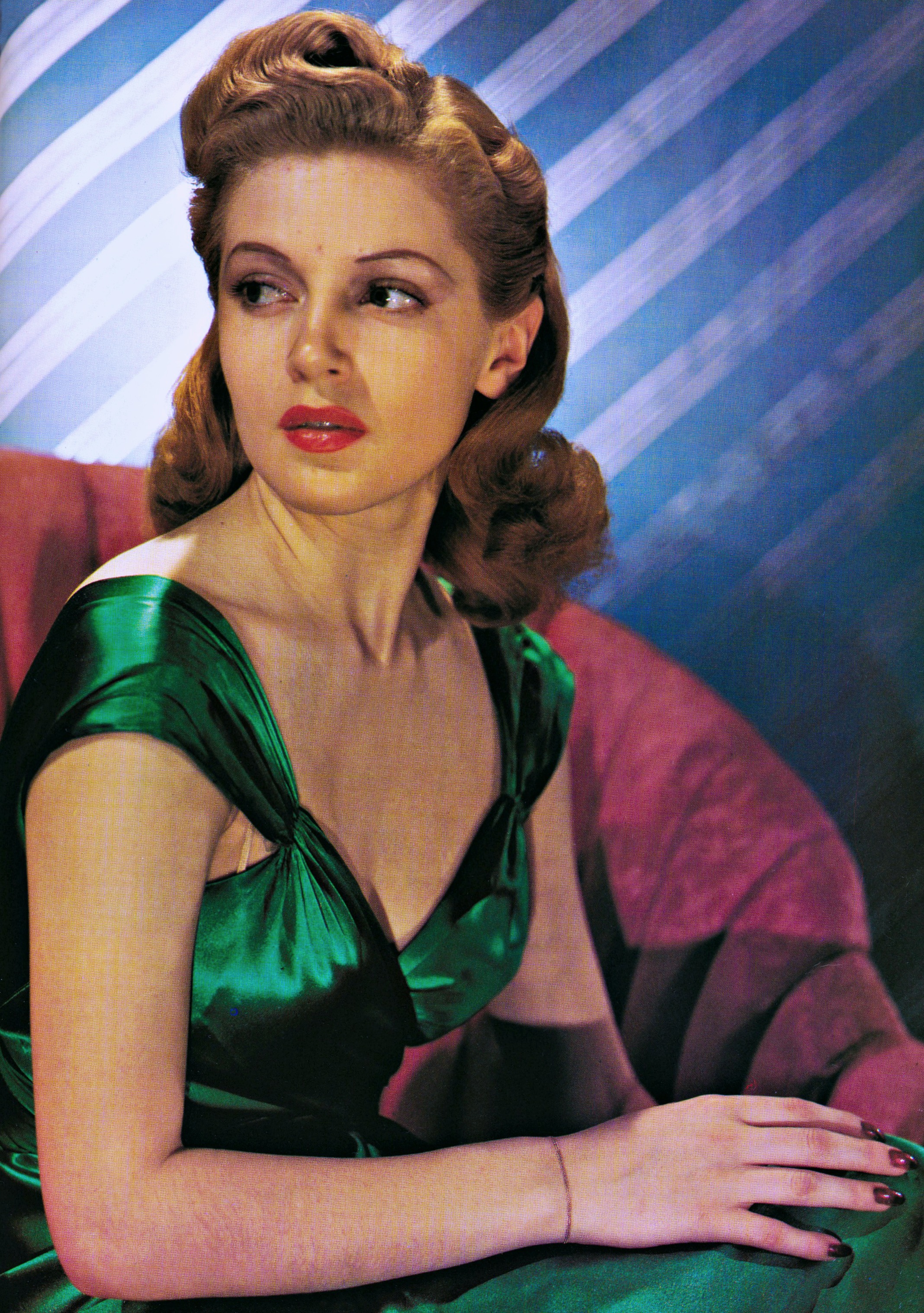
By the time this unretouched color portrait was made, 18-year-old Lana Turner had been discovered three years earlier in a manner that has made it into the annals of show-biz mythology. The immediate result of her discovery in an iconic malt shop near Hollywood High School where she was a student, was a movie contract with producer-director Mervyn LeRoy (1900-1987).
“America’s Sweater Sweetheart”
The title of Lana Turner’s first film in 1937 for Warner Brothers was They Won’t Forget. The title proved prophetic for Lana Turner’s Hollywood career. By 1938 Lana Turner was a sex symbol who went on to make over 50 glamorous films, most of them at M-G-M.
Lana Turner was only 16 years old when she played her five-minute debut part that has her at one point strut across the screen in a tight-fitting sweater and cocked beret for about 20 seconds.
Lana’s image created such a stir among movie-going audiences that gossip columnist Walter Winchell coined her “America’s Sweater Sweetheart” because of her now-classic screen appearance.
Over the next 20 years, a bevy of Hollywood actresses would wear tight sweaters over specialty bras that emphasized the bust line in the hope of sparking a Lana Turner movie success story for themselves.
Lana was originally being groomed to be the new Harlow. She followed the sex-bomb script in full force in 1941 when the studio dyed her hair whitish blonde for Ziegfeld Girl. Lana co-starred with Judy Garland and Hedy Lamarr and stole the show.
Hungarian-born photographer László Willinger (1909–1989) started his professional career in Vienna, Austria. He left Europe for America in 1937 where he joined M-G-M that same year. Soon after, he made this lush shot of 18-year-old Lana Turner in a silky green dress seated on a red divan (or chair) with her head turned and looking to one side with slightly bloodshot eyes.
Willinger’s color portrait of red-headed Lana Turner emphasizes the sensuality of her personality manifested in her full red sensuous lips and painted nails. In 1944, László Willinger left MGM and established his own photography studio in Hollywood. For the next 40 years he successfully practiced his craft.
About her own reputedly rowdy personal life in those M-G-M years, Lana Turner later remarked: “My plan was to have one husband and seven children, but it turned out the other way…”
SOURCES:
DIETRICH – “Miss Dietrich to Receive Medal,” The New York Times, November 18, 1947;
https://ladailymirror.com/2013/11/04/mary-mallory-hollywood-heights-mdash-a-l-whitey-schafer-simplifies-portraits/;
http://vintagemoviestarphotos.blogspot.com/2014/11/a-l-whitey-schafer.html;
They Had Faces Then. Annabella to Zorina: The Superstars, Stars and Starlets of the 1930’s, John D. Springer and Jack D. Hamilton, Citadel Press, Secaucus, New Jersey, 1974.
Hollywood Color Portraits, John Kobal, William Morrow and Company. Inc., New York, 1981.
https://www.aenigma-images.com/2017/04/a-l-whitey-schafer/
PHOTO CREDIT – *The photograph copyright may be believed to belong to the distributor of the film, Paramount, the publisher of the film or the graphic artist. The copy is of sufficient resolution for commentary and identification but lower resolution than the original photograph. Copies made from it will be of inferior quality, unsuitable as counterfeit artwork, pirate versions or for uses that would compete with the commercial purpose of the original artwork. The image is used for identification in the context of critical commentary of the work, product or service for which it serves as poster art. It makes a significant contribution to the user’s understanding of the article, which could not practically be conveyed by words alone. As this is a publicity photo (star headshot) taken to promote an actress, these have traditionally not been copyrighted. Since they are disseminated to the public, they are generally considered public domain, and therefore clearance by the studio that produced them is not necessary. (See- Eve Light Honthaner, film production expert, in The Complete Film Production Handbook, Focal Press, 2001 p. 211. Gerald Mast, Further, film industry author, in Film Study and the Copyright Law (1989) p. 87, writes: “According to the old copyright act, such production stills were not automatically copyrighted as part of the film and required separate copyrights as photographic stills. The new copyright act similarly excludes the production still from automatic copyright but gives the film’s copyright owner a five-year period in which to copyright the stills. Most studios have never bothered to copyright these stills because they were happy to see them pass into the public domain, to be used by as many people in as many publications as possible.” Kristin Thompson, committee chairperson of the Society for Cinema and Media Studies writes in the conclusion of a 1993 conference with cinema scholars and editors, that they “expressed the opinion that it is not necessary for authors to request permission to reproduce frame enlargements … [and] some trade presses that publish educational and scholarly film books also take the position that permission is not necessary for reproducing frame enlargements and publicity photographs.”(“Fair Usage Publication of Film Stills,” Kristin Thompson, Society for Cinema and Media Studies.)
TAYLOR -http://tatteredandlostephemera.blogspot.com/2009/06/who-is-hymie-fink.html;
http://archives.chicagotribune.com/1956/09/29/page/22/article/diana-dors-isnt-homesick-shes-set-for-film-in-britain;
Hollywood Color Portraits, John Kobal, William Morrow and Company. Inc., New York, 1981.
TURNER – Hollywood Color Portraits, John Kobal, William Morrow and Company. Inc., New York, 1981.
Lana Turner interview with Phil Donahue, 1982 – https://www.youtube.com/watch?v=uhu6_V7pNL0
“Hollywood Photographer Dies,” The Hour, Associated Press, August 9, 1989 – https://news.google.com/newspapers nid=1916&dat=19890814&id=azIiAAAAIBAJ&sjid=uXQFAAAAIBAJ&pg=1804,2177679
PHOTO CREDIT: *The photograph copyright may be believed to belong to the distributor of the film, Metro-Goldwyn-Mayer, the publisher of the film or the graphic artist. The copy is of sufficient resolution for commentary and identification but lower resolution than the original photograph. Copies made from it will be of inferior quality, unsuitable as counterfeit artwork, pirate versions or for uses that would compete with the commercial purpose of the original artwork. The image is used for identification in the context of critical commentary of the work, product or service for which it serves as poster art. It makes a significant contribution to the user’s understanding of the article, which could not practically be conveyed by words alone. As this is a publicity photo (star headshot) taken to promote an actress, these have traditionally not been copyrighted. Since they are disseminated to the public, they are generally considered public domain, and therefore clearance by the studio that produced them is not necessary. (See- Eve Light Honthaner, film production expert, in The Complete Film Production Handbook, Focal Press, 2001 p. 211. Gerald Mast, Further, film industry author, in Film Study and the Copyright Law (1989) p. 87, writes: “According to the old copyright act, such production stills were not automatically copyrighted as part of the film and required separate copyrights as photographic stills. The new copyright act similarly excludes the production still from automatic copyright but gives the film’s copyright owner a five-year period in which to copyright the stills. Most studios have never bothered to copyright these stills because they were happy to see them pass into the public domain, to be used by as many people in as many publications as possible.” Kristin Thompson, committee chairperson of the Society for Cinema and Media Studies writes in the conclusion of a 1993 conference with cinema scholars and editors, that they “expressed the opinion that it is not necessary for authors to request permission to reproduce frame enlargements … [and] some trade presses that publish educational and scholarly film books also take the position that permission is not necessary for reproducing frame enlargements and publicity photographs.”(“Fair Usage Publication of Film Stills,” Kristin Thompson, Society for Cinema and Media Studies.)


